How Prince Charles’s Rituals of Occupation, Possession & Sovereign Conquest of November 2019 Obscured the Two Legal Tracks Laid by the British Crown to Acquire New Zealand with Paper, Pens and Presents by Persuading Māori that Queen Victoria was a Benign Monarch
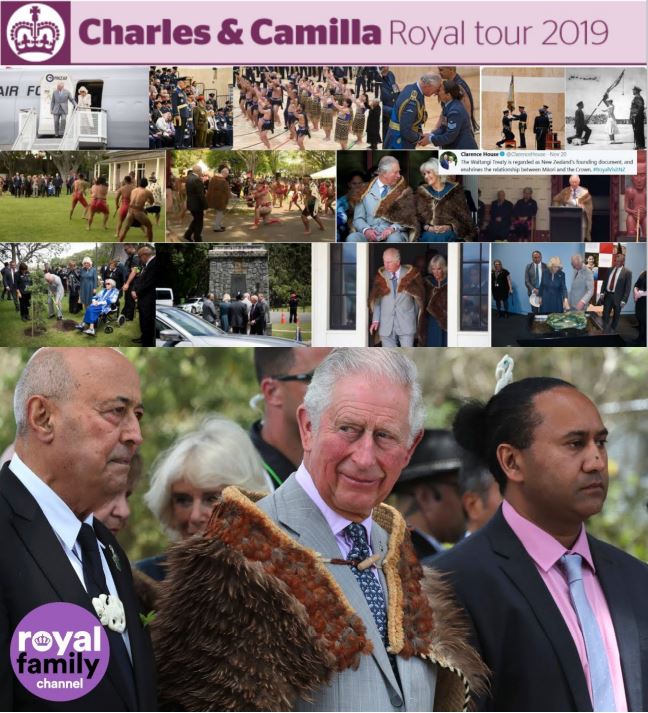
The Royal Tour of Prince of Wales and the Duchess of Cornwall to New Zealand in November 2019 are exposed as rituals of sovereign occupation and possession. Symbolic sovereign rituals were performed in accordance with the Doctrine of Discovery that emerged during the Crusades. The Snoopman examines the layered symbolism of these rituals performed at Whenuapai Airbase and at the Waitangi Treaty Grounds. Northland’s largest iwi, Ngāpuhi, failed to present ‘HRH’ – The Prince of Wales – with a copy of the Waitangi Tribunal’s scholarly 600-page October 2014 report, and their own commissioned, excellent field report, Ngāpuhi Speaks, which both found that Ngāpuhi Treaty Chiefs believed they were conferring Queen Victoria the right to appoint a governor to rule over Pākekā, and did not wittingly sign away their sovereignty in 1840. Furthermore, The Snoopman shows that the 1840 Waitangi Treaty was theatre performed to contrive the voluntary cession of sovereignty. By tracing the scholarly work of a few overlooked historians, he proves that there were two parallel tracks – a Colonial Law Track and a Treaty Theatre Track – that were laid during the British takeover of New Zealand.
The failure of Ngāpuhi to authentically challenge Prince Charles over Queen Elizabeth’s claim to New Zealand as an ancestral possession, means the Ngāpuhi tribe’s male leadership at the upper marae on the Waitangi Treaty Grounds capitulated to Prince Charles’s charm offensive. Both parties ritually ‘posted hostages’ to advance the Treaty settlement game and endorsed a Waitangi Disney Treatyland mythology by suppressing the truth about the ‘Myth of Cession’. Moreover, Ngāpuhi recklessly allowed The Prince to get away with portraying New Zealand as a place that has honestly faced up to the dark history inflicted by the British Crown and British subjects. Furthermore, the Queen’s move to loan a korowai gifted to Queen Victoria in July 1863 appeared to be a Test the Waters Ritual for a solution to the land dispute at Ihumātao, since the simultaneous strategically-timed ‘leak’ seemed to signal the Crown might make a Tax-Herd funded loan to the Auckland Council to buy-back land confiscated in July 1863 by Freemason Governor Bro. George Grey, who was made a Knight Commander in the Companion Order of the Bath in 1848 by Prince Charles’s great, great, great grandmother, Queen Victoria.
The Snoopman
The Symbol System of the Discovery Doctrine — Whenuapai & Waitangi
The symbolic meanings embedded in Prince Charles’s ceremonial rituals during his November 2019 visit to New Zealand were performed to reaffirm the sovereignty of Queen Elizabeth II.
Indeed, the neo-feudal Prince — whose private estate the Duchy of Cornwall was founded in 1337 by Edward III, and is approximately 54,845 hectares, or 135,526 acres, spread across 23 counties of England and Wales and includes over 600 residential lettings, commercial properties, a prison and more than 700 agricultural tenancies — performed what The Snoopman calls Royal Charm Offensive Spells at Whenuapai, Waitangi and throughout the rest of his tour.
These ‘spells’ was propagandist. It’s deployment, particularly at Waitangi, was designed to lower expectations, construct acceptance to complete the treaty settlements and win loyalty to Royalty – as British subjects – through emotional hijacking.
The Prince Charles presented a new Queen’s Colours flag to the Royal New Zealand Air Force on Monday November 18 2019 to a conformist audience. The news media reported the new Queen’s Colours flag was presented to replace the worn one presented during Her Majesty’s 1953-54 Coronation Tour. The Royal Air Force and the Royal Navy possess Queen’s Colours flags for ceremonial use when the Monarch, or a Royal Family member, is travelling in an official capacity in the Realm of New Zealand.iv Such flags are a symbol of sovereignty and communicate the armed forces are ‘Her’ armed forces.
Prince Charles – who was made Admiral of the fleet of the Royal New Zealand Navy, a Field Marshal for the army and Marshal of the Royal New Zealand Air Force, with the Queen’s approval ahead of his 2015 Royal Visit – wore his Royal Air Force attire.
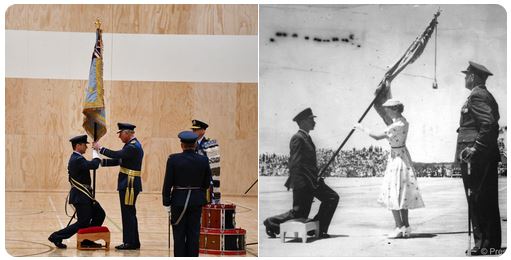
Incredibly, when Prince was welcomed onto the Waitangi Treaty Grounds , Northland’s largest tribe, Ngāpuhi, allowed the neo-feudal billionaire Prince to forgo bending to pick up feather during the wero, or challenge sequence of the powhiri cermony.
Instead, the feather was handed to Prince Charles.
Whereas, at Government House in Auckland the previous day, Radio New Zealand reported a “warrior placed a dart on the ground for His Royal Highness to pick up.”
This submission by a Ngāpuhi tane, in effect, symbolized the capitulation of Ngāpuhi’s male leadership, who passed up the opportunity to speak to the Prince of Wales about the Myth of Cession maintained by the New Zealand Crown. This enduring national myth still holds that Ngāpuhi and other tribes and hapū that signed the Treaty of Waitangi in 1840 wittingly ceded, or signed away, their sovereignty to Queen Victoria in 1840. This myth endures in spite of the Waitangi Tribunal’s 2014 finding that Ngāpuhi and other chiefs did not cede sovereignty.

The Princes’ issuance of a new Queen’s Colour flag to the Royal New Zealand Air Force at Whenuapai and – ironically – a wero challenge at Waitangi were active symbols performed as rituals of submission. In essence, such submissions were an acknowledgment of sovereign conquest of a Realm gained by swindle, stealth and struggle.
An active symbol involves motion such as triumphal parade, a coronation ceremony and a salute to a flag – as the late-executive director of the Flag Research Center in Winchester, Massachusetts, Dr. Whitney Smith (1940-2016), stated in his exquisitely executed 1975 book, Flags through the Ages and Across the World. Dr Smith pointed out that the most potent symbols are those which simultaneously combine all four groups of symbols of a given symbol system. These are: active, verbal, concrete and graphic symbols – and are defined or illustrated as their examples are revisited with their group term in italics.
In short, Prince Charles was performing rituals of Sovereign Conquest.
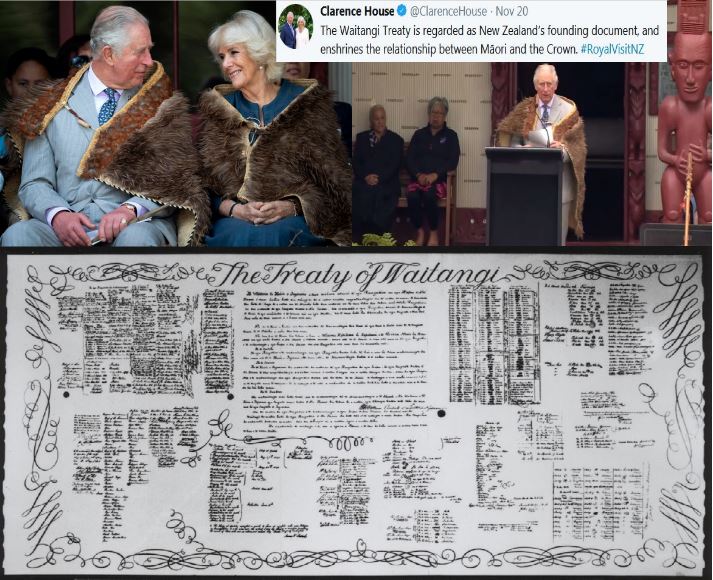
The neo-feudal Duke of Cornwall – whose ancestral Duchy of Cornwall comprises 203 square miles – also planted a pohutukawa tree near the Waitangi Treaty House.
Brazenly, ‘His Royal Highness’ planted this pohutukawa tree in the company of Titewhai Harawira, who was a member of the 1970s Māori land rights and sovereignty group, Ngā Tamatoa. Titewhai Harawira’s ancestral ties are to Ngāti Hau and Ngāti Hine hapū of Ngāpuhi and Ngāti Wai tribes.
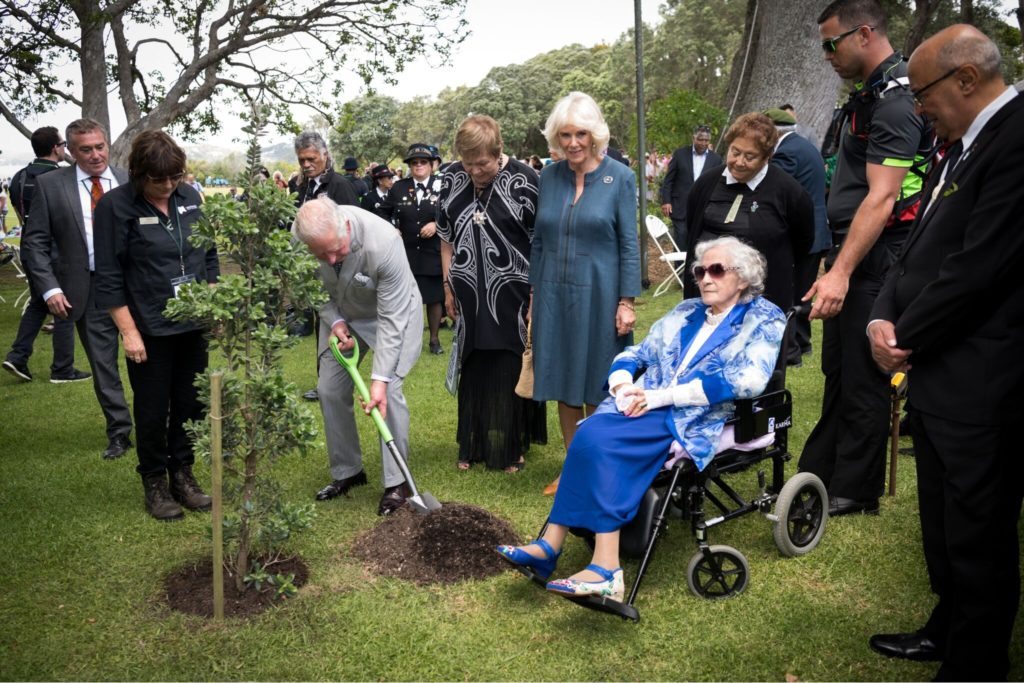
This active symbol was also combined with a concrete symbol.
Concrete symbols are any object that has been imbued with special symbolic meaning in addition to its practical purposes. Such concrete symbols become potent for people when they are combined with rituals performed in places of historical significance, such as a special building, a mountain or a tree, or other objects acquiring a mystic force in peoples’ minds.
This tree planting ritual took place near where Queen Elizabeth II also planted a tree during her 1953-54 Coronation Tour.
Prince Charles also performed this tree planting ritual as a symbol of actual occupation and current possession – in accordance with the sophisticated symbol system embedded in the little known, yet still active Law of Colonialism — the Doctrine of Discovery — that emerged during the Crusades and was further developed from the 15th Century when the European Maritime Powers began making forays into the ‘New World’.
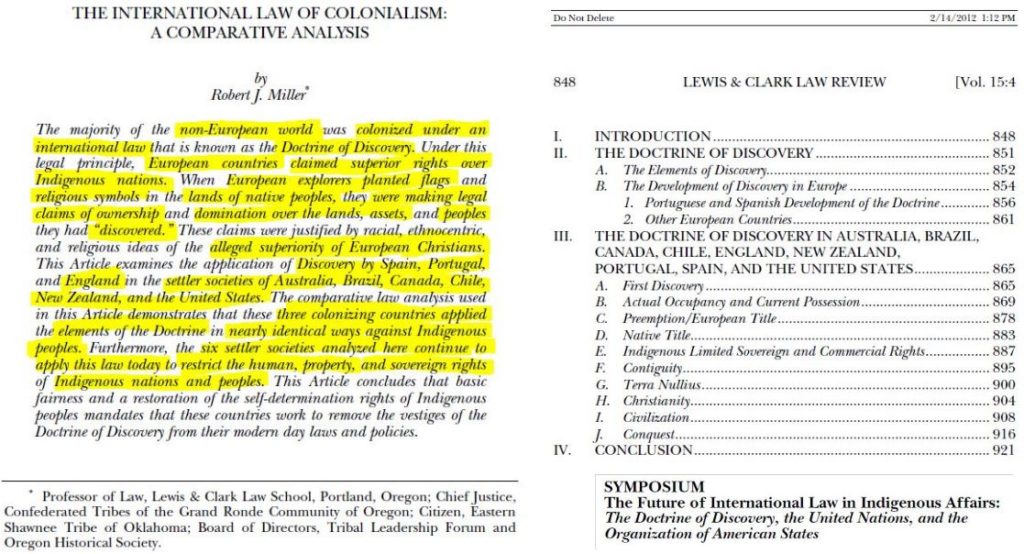
European Superiority Complex Explained: Professor Miller identified ten elements of the Discovery Doctrine: (1) First Discovery; (2) Actual Occupancy and Current Possession; (3) Preemption/European Title; (4) Indian Title; (5) Tribal Limited Sovereign and Commercial Rights; (6) Contiguity; (7) Terra nullius; (8) Christianity (9) Civilization; and (10) Conquest. [See also: Professor Robert J. Miller (2006). Native America, Discovered and Conquered].
Poignantly – His Royal Highness The Prince of Wales and Heir Apparent to the British Throne performed this active symbol of actual occupation and current possession a few days after the 250th mark of Freemason Captain Bro. James Cook claiming to have performed a possession ritual at Mercury Bay/Te Whanganui-a-Hei in mid-November 1769 in the name of His Majesty.
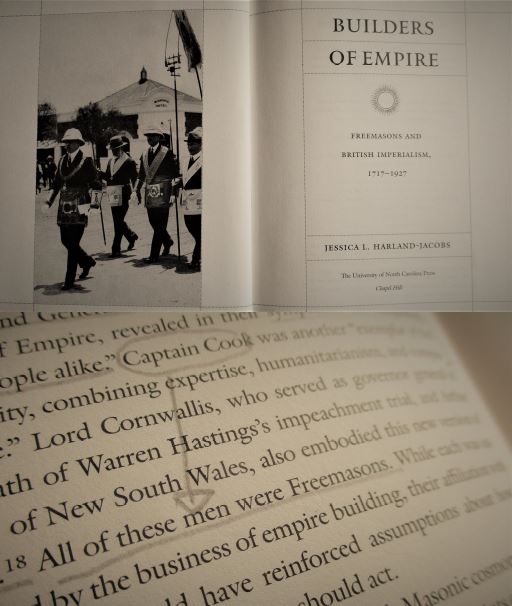
Captain Cook was a Freemason: In her book, Builders of Empire: Freemasonry and British Imperialism, 1717-1927 – Jessica Harlands-Jacobs showed Freemasonry was the primary secret mechanism used to expand the British Empire, and that Freemasonry mostly spread through the military regiments, including the navy.
In the case of New Zealand, Freemason Captain Bro. James Cook secret instructions from the Admiralty did not specify taking possession or to seek the “Consent of the Natives”, despite what many lazy historians claim. That particular instruction was for the Great Southern Continent, Terra Australis, and for other islands he found inhabited that had not been previously discovered by any other European. But, since Captain Bro. Cook did report he had claimed possession at two places in New Zealand, its fascinating to note that his written secret instructions from the Admiralty did not state exactly how he might achieve that consent without his head becoming skewered on a stick.
It would appear there was another set of instructions, since Secretary of State to the Admiralty Lord Shelburne (William Petty) carried King George III’s Royal instructions to the Admiralty, as David Wood wrote in his 1947 book, Cook The Explorer. To convey an idea of the calculus of the British Masonic Empire during the reign of King George III (1738-1820), Lord Shelburne was the overlord of the British Secret Intelligence Service, which was an alliance between English, Scottish and Swiss ‘noble’ families, as Anthony Chaitkin found while researching his book, Treason in America, that explored their subversion of the United States of America from the American Revolution to World War II. Lord Shelburne would later set in motion an orchestrated subversion of rival states, such as France, Spain and America following the loss of the 13 colonies in 1783 at the end of the American Revolutionary War (1776-1783), which established the United States of America as a Templar Masonic State.
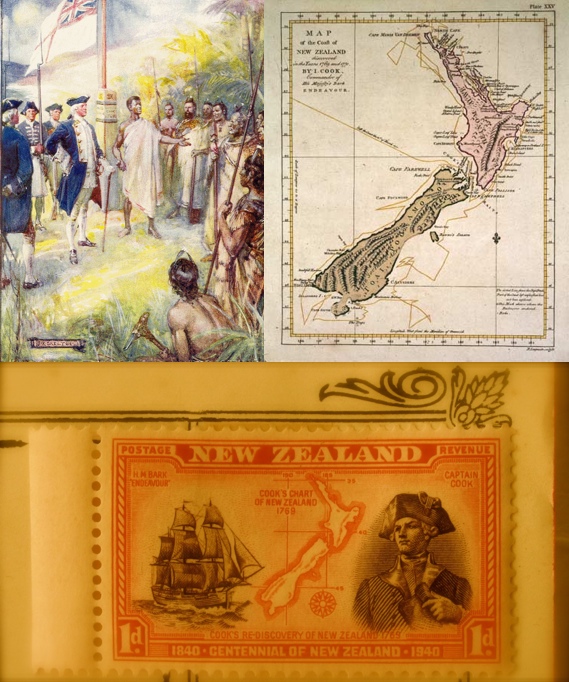
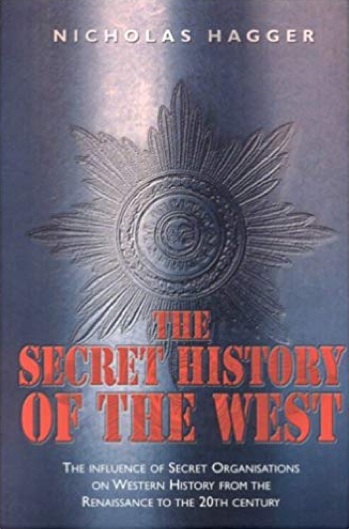
The Revolutionary Dynamic: In his epic study, The Secret History of the West, Nicholas Hagger models for the patterns of revolutions, how secret societies plotted them and reasons for the subterfuge.
It turns out, there were two British Empires. There was the visible Christian British Empire, complete with missionaries exercising ‘soft-power’ to civilize ‘the natives’. And there was the hidden British Masonic Empire hell-bent on world domination, as Nicholas Hagger found in his epic study, The Secret History of the West, that modelled for the patterns of revolutions, how secret societies plotted them and the reasons for the subterfuge. Indeed, the primary secret mechanism by which the British Empire spread throughout the ‘New World’ was through the secret society of Freemasonry. In turn, Freemasonry was spread mostly through the military regiments, including the navy, as Jessica Harland-Jacobs showed in her book, Builders of Empire: Freemasonry and British Imperialism, 1717-1927. Harland-Jacobs, who accessed numerous Freemason libraries for her PhD including the Royal Archives, was the keynote speaker at English Freemasonry’s 300th Anniversary in 2017. Hagger stated British Freemasonry was Sionist Rosicrucian Freemasonry whose hell-bent utopian vision of a world empire under one monarch competed with a rival Brotherhood, French Templar Freemasonry, whose utopian vision was a world empire under one federal republic. These competing visions underpin centuries of warfare, violent state formation and dispossession, and have been explored as a revolutionary dynamic by Nicholas Hagger in his epic, The Secret History of the West.
Where the British Admiralty were guarded about the means to gain consent of inhabitants in ‘discovered’ lands, the Dutch were quite open about how to construct voluntary assent or submission through means of ‘friendly persuasion’.
The Dutch United East India Company’s instructed Captain Tasman to plant symbols of “actual occupation” which were either a memorial stone or the Netherland’s prince flag. These objects, as graphic symbols, were meant to be erected or hoisted as possession rituals to lay claim to any lands that the Dutch explorer discovered, touched and set foot on.
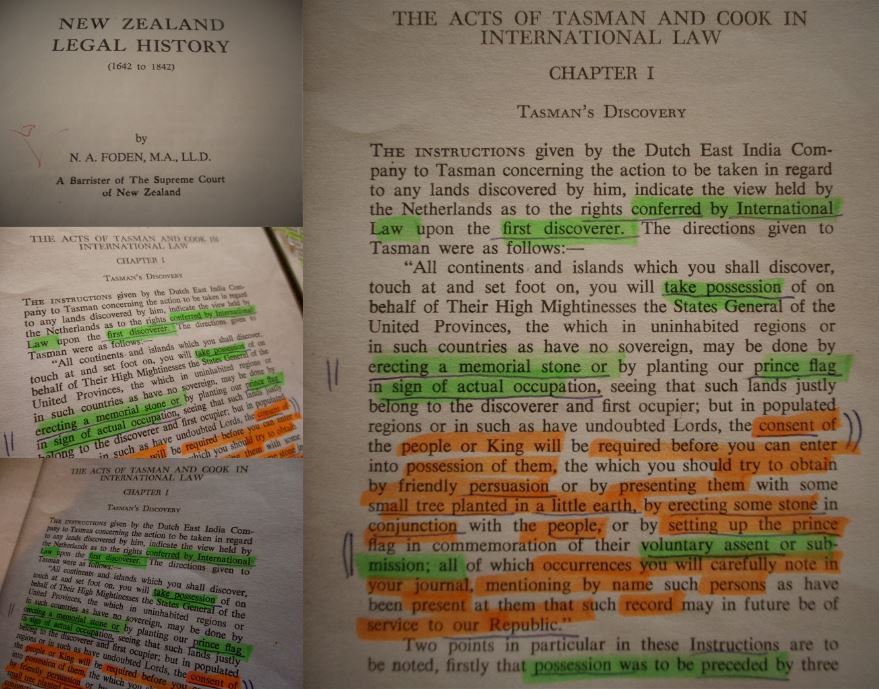
Crucially, to fulfill the taking of possession of ‘discovered’ lands, Tasman was also supposed to gain the voluntary assent or submission of the people of any inhabited lands through “friendly persuasion”, or “planting a small tree in a little earth”, or “by erecting some stone with the people”, or by way of hoisting “the prince flag to commemorate their consent”.
Since this pohutukawa tree planting ritual of November 20 2019 at Waitangi was performed in the company of Titewhai Harawira, it would appear that the Prince, in effect, gained the voluntary assent or submission of the rebellious among the ‘inhabitants’ of the Far North through friendly persuasion, as he planted a small tree in a little earth.
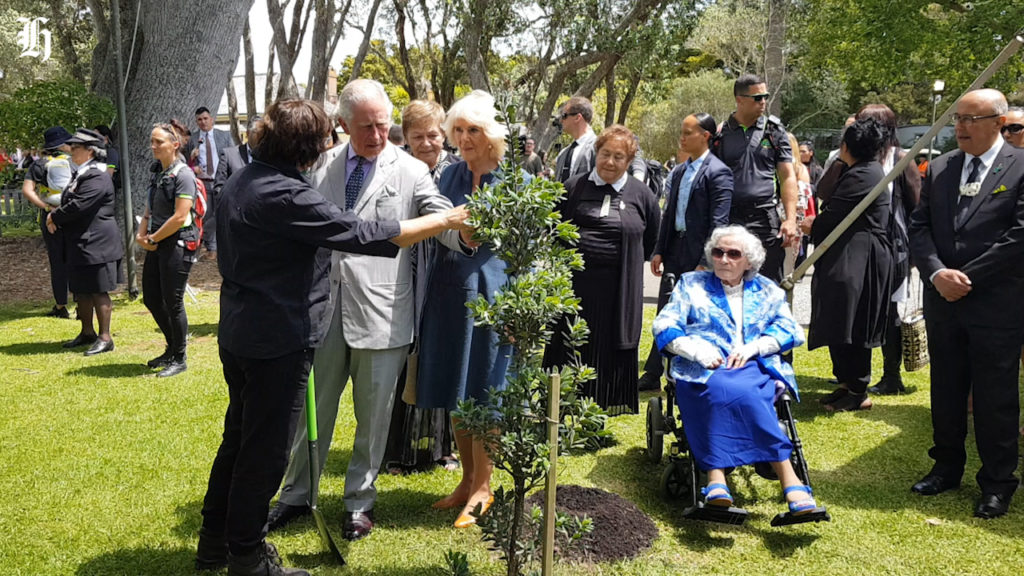
In effect, Northland’s largest iwi, Ngāpuhi has endorsed a Waitangi Disney Treatyland mythology through their failure to present ‘HRH’ – The Prince of Wales, with a copy of the Waitangi Tribunal’s scholarly 600-page October 2014 report, and their own commissioned, excellent field report, Ngāpuhi Speaks. Those two reports both found that the Ngāpuhi Treaty Chiefs believed they were conferring Queen Victoria the right to appoint a governor to rule over Pākekā, and did not wittingly sign away their sovereignty in 1840.
Just as audaciously, Prince Charles’s performed a combined ‘active symbol’ with a ‘concrete symbol’ of sovereignty when he paid homage to New Zealand’s second governor, Captain William Hobson at the William Hobson Memorial Stone in the company of his Ngāpuhi hosts. [Editor’s Note: New Zealand’s first Governor was George Gipps, at the time of the 1840 Waitangi Treaty signings, while simultaneously Governor of New South Wales, New Holland (now Australia) – as Gavin McLean points out in The Governors: New Zealand’s Governors and Governors-General].
As the ‘stage director’ of what was really a ‘Waitangi Treaty Theatre Company’, Captain Hobson, leaned on the Protestant missionaries to help him persuade the rangatira about the benefits of a treaty with the British. Captain Hobson’s mission to persuade, or charm offensive, which occurred with unseemly haste, along with the cast and props including the treaty sheets, quills and ink, was New Zealand’s second theatre company – the first being Captain Cook’s voyages.
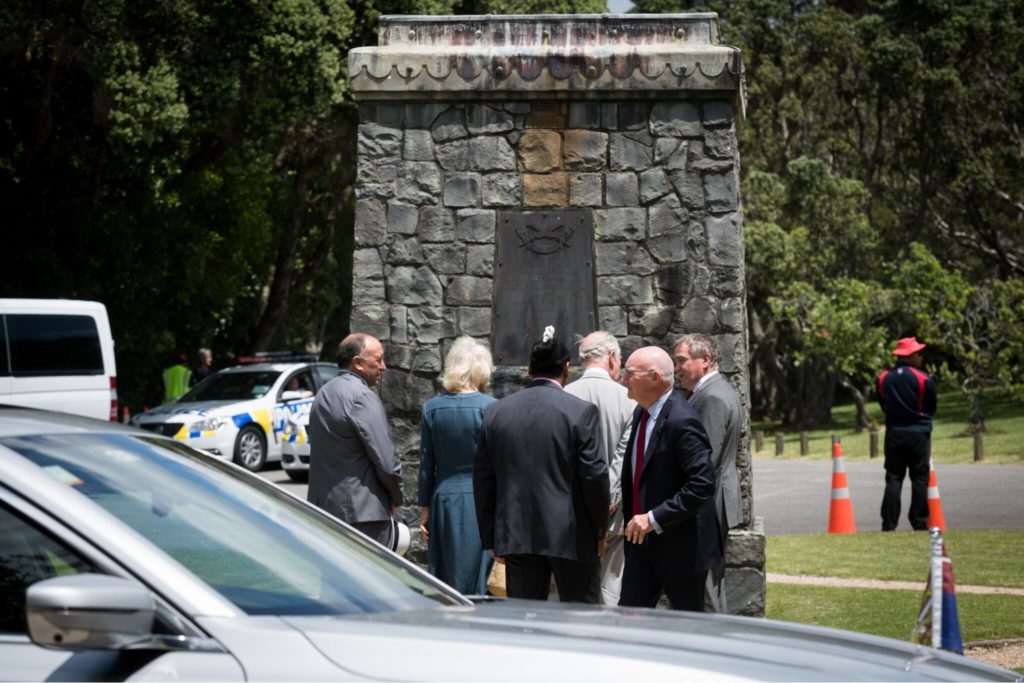
Tellingly, the Royal Navy captain, proclaimed sovereignty over Te Wai Pounamu on the grounds of Cook’s discovery on 21 May 1840 – before the South Island treaty sheet was returned to him. With this fictional act he proclaimed himself as Lieutenant-Governor Hobson. That action, made in a panic, is the tell-tale sign that two parallel tracks were laid to gain sovereignty over New Zealand. One track, the Colonial Law Track was consistent with English Constitutional Law and was deployed in accordance with the Discovery Doctrine. The other – the Treaty Theatre Track – would not have stood up to scrutiny in English or European courts, as Norman Arthur Foden found while researching in the British archives for his 1938 book, Constitutional Development of New Zealand in the First Decade (1839-1849). It was deployed as theatre to construe ‘free and intelligent consent’ for the purposes of propaganda in Britain and to defuse Māori resistance by construing the Treaty as an agreement that would leave indigenous authority intact.
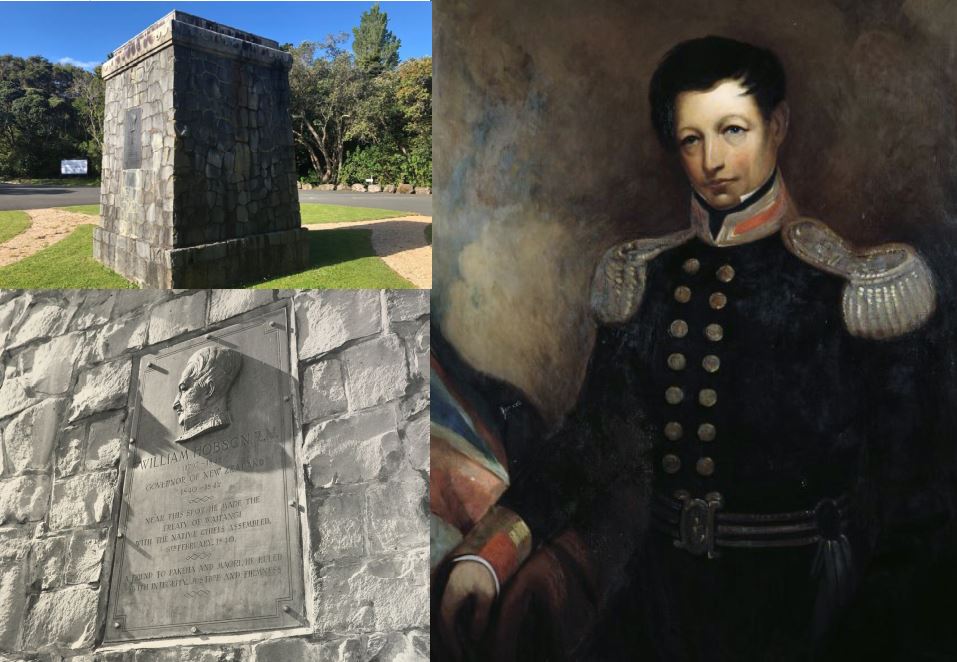
Therefore, it was significant that the Duke and Duchess of Cornwall performed a ‘Touching the Pounamu Ritual’ inside the Waitangi Museum, which combined active, concrete symbols with his vocally symbolic speech that reaffirmed the Prince’s ‘commitment’ to ensure that future generations live under the rule of the neo-feudal British Monarchy, their Fourth British Empire and their alliance with the US-NATO military empire.
Prince’s Vocal Ritual of Sovereign Conquest – Waitangi
Crucially, the billionaire heir to the British Throne manipulated his audience at Waitangi, news audiences and even the historical record when he incorrectly claimed New Zealanders had “faced up to the most painful periods of Her past in a way that offers an example to the world” during his speech at Waitangi. When, in fact, the deep history of Waitangi, the British Masonic Northern War of 1845-46 and the New Zealand Masonic Revolutionary War of 1860-72 contain hidden layers that are barely known to historians, let alone taught.
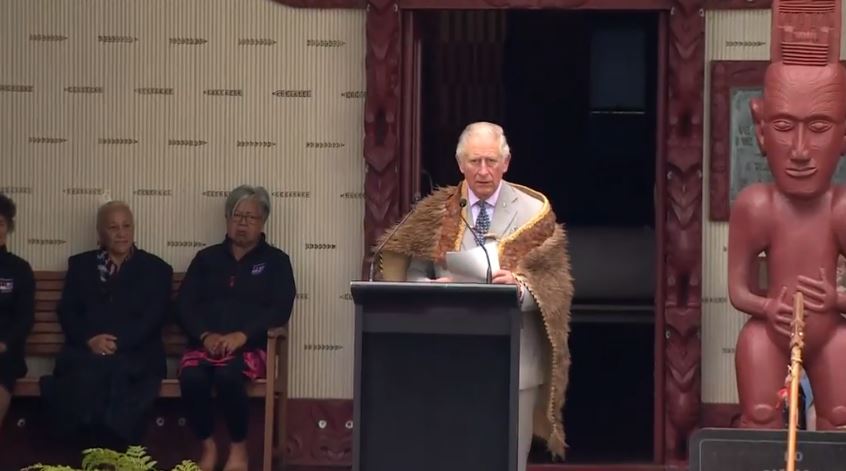
Furthermore, Prince Charles incorrectly remarked that “[t]wo peoples – tangata whenua and tauiwi – agreed to come together under the treaty and to work in partnership”. When, in fact, His Royal Highness’s great, great, great grandmother, set in motion the stealthy British takeover of New Zealand with her Royal Seal on the Letters Patent of Boundary Extension, dated June 15th 1839 – as The Snoopman outlines in the subsection below, “ Treat or Tricks — The Enduring Waitangi Cession Myth”.
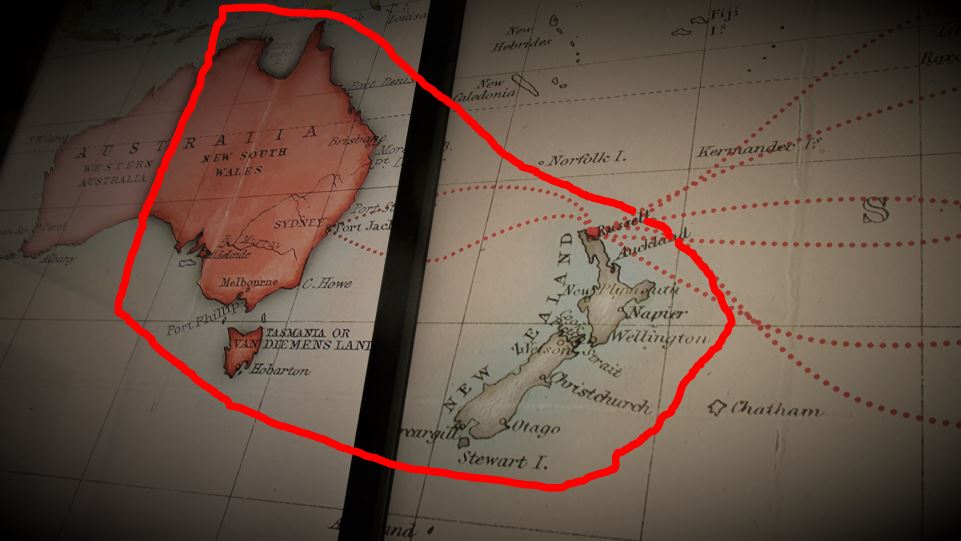
Conspicuously, the neo-feudal Royal billionaire claimed to “emphasize the strength of the commitment of successive sovereigns to the defining promise of this convenant” and with a brazen feigning of humility, he asserted to “reaffirm my commitment and that of my children and grandchildren to this bond between us and to ensuring that it endures for future generations.”
Conspicuous – because the neo-feudal Prince did not actually specify what exactly was “the defining promise of this convenant.”
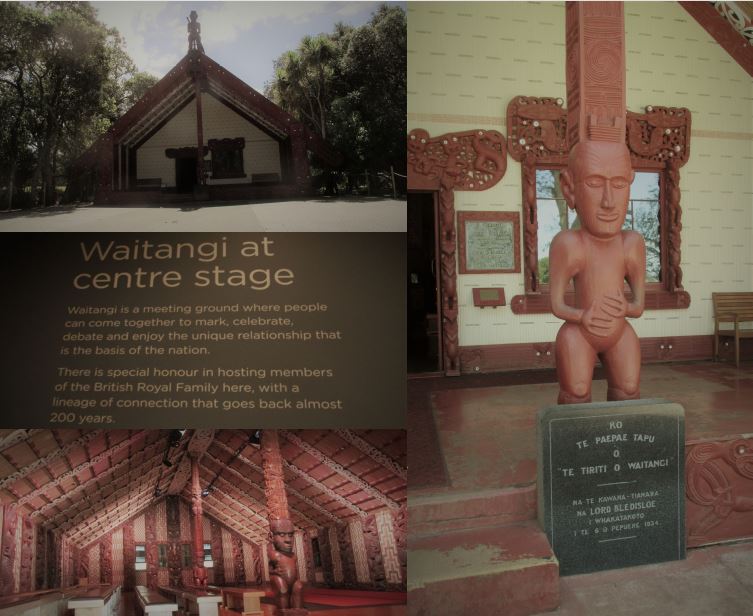
Significantly, the Heir to the British Throne mentioned himself and his heirs when he went on to say, “I humbly reaffirm my commitment and that of my children and my grandchildren to this bond between us”. [Emphasis added].
It would appear then, the defining promise of this convenant that Prince Charles was referring to, is the Royal protection and security of the just Rights, Property, Peace and Good Order of the Native Chiefs and Tribes of New Zealand.
However, the bond of this ‘covenant’ was, in fact, an uneven exchange that could not be fairly described as an partnership, but rather as a paper roadmap to a future of de-tribalized, landless and tax-enslaved indigenous serfs captured in a Neo-Feudal system.
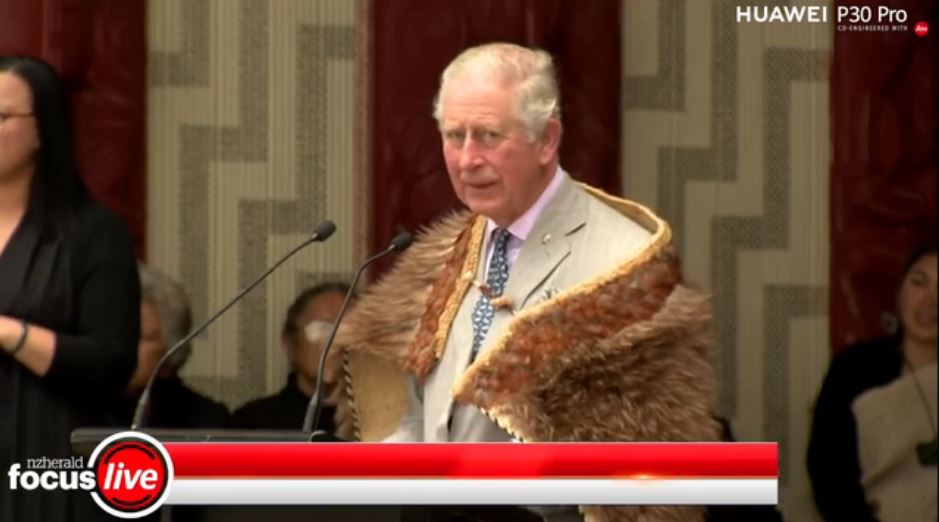
Indeed, this dark picture is inextricably linked to the British takeover of New Zealand.
Yet, the current New Zealand Crown has continued to avoid fully disclosing to this crisis-ridden neo-feudal realm the how exactly, the who exactly, and the why exactly of the machinations to gain paper sovereignty and substantial sovereignty over New Zealand. During the Ardern Coalition Government’s tenure, the Crown has also avoided fessing-up that neither Ngāpuhi or any other iwi or hapū signed away their sovereignty in 1840. In this regard, the Ardern Administration has ‘stayed the course’ set by the Key Ministry, when the Key Government downplayed and then ignored the findings of the Waitangi Tribunal that Māori did not cede sovereignty in 1840.
Recklessly, the Ardern Government, through its Department of Internal Affairs, hosted the Royal Prince Charming Tour 2019 to cement the myth of cession some 250 years after Captain Cook claimed he performed possession rituals at one of two places on his Endeavour Voyage – on, or around, November 15th 1769 at Mercury Bay/Te Whanganui-a-Hei on the Coromandel Peninsula. (Cook also recorded he claimed possession and in late January 1870, on Moutuara Island at Totaranui inlet at the top of Te Wai Pounamu, or the imaginatively-named South Island). In other words, The Prince’s power rituals at Waitangi were encoded with the Discovery Doctrine to cement the Waitangi Treaty Cession Myth.
To this emotionally manipulative end, Prince went on to say that Queen Elizabeth II has loaned an heirloom to the Waitangi Museum. The 2.6m-long korowai, or a cloak woven from fine flax fibres, had been gifted to Queen Victoria by Ngāpuhi chief Reihana Takauwau on a visit to the Patronness of English Freemasonry’s summer residence, Osborne House, on the Isle of Wight, on 15 July 1863. Chief Te Takauwau was travelling as a part of a 13-member theatre company set up by Wesleyan lay preacher, William Jenkins, whose business venture was to demonstrate to Māori the power and resources of Britain, with Governor Grey’s approval − and evidently its class system. The Wesleyan travelled first class on the Ida Ziegler, while his guests were given worm-infested biscuits which they rightly threw overboard and were instead fed by British soldiers.
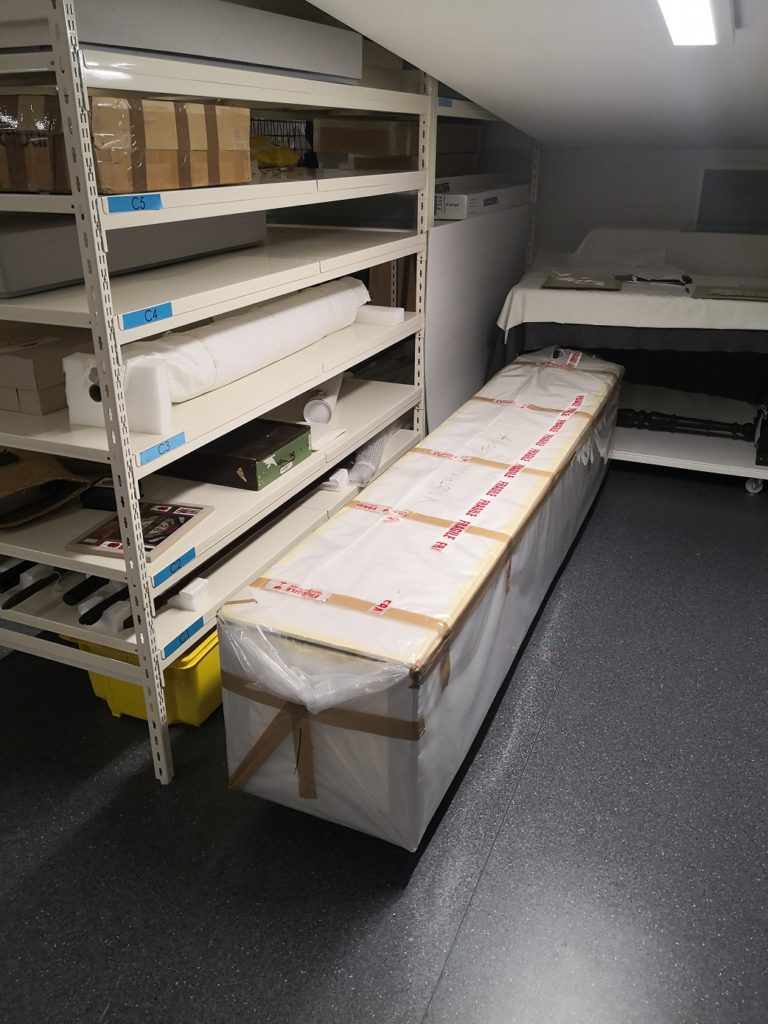
Ironically, before this 13-member theatre company had reached England, Queen Victoria’s son, HRH Prince George William Frederick Charles, who was the Commander-in-Chief of British Armed Forces, signed orders on April 13th 1863 for the 43rd, the 50th and 68th Regiments to travel to New Zealand in accordance with the war plans of Governor George Grey. Also ironically, another Wesleyan lay-preacher, Thomas Russell, who as the primary founder of the Bank of New Zealand played a pivotal role in brokering a £3 million war loan for the Colonial Government, also facilitated a rolling overdraft to meet military expenses and distributed war resources as Minister of Colonial Defence. It would appear then, that the Prince of Wales’s charm offensive contained carefully codified communications designed primarily for an élite audience attuned to the language of metaphor, Discovery Doctrine rituals and crisis rituals to retake control of national narratives.
Because, at Waitangi, the Prince appeared to signpost the solution in the dispute at Ihumātao over land confiscated by the Crown in July 1863 with the symbolic loan of the korowai gifted to Queen Victoria by Chief Takauwau on July 15th 1863. With the presentation of the ‘wrapped up’ korowai, the Neo-Feudal Prince seemed to signal that a tax-herd funded buy-back of the disputed land on the Ihumātao Peninsula via a Crown loan to Auckland Council – might do the trick.
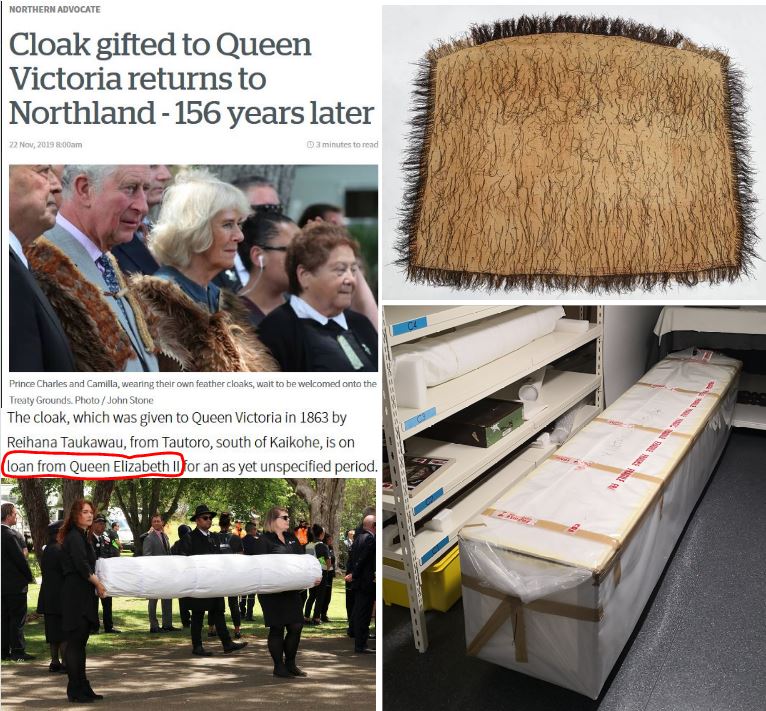
Magically, a ‘leak’ occurred during the Royal Tour week, with Radio New Zealand reporting the idea of a Crown loan to buy-out Fletcher Building Limited’s stake in the land at Ihumātao. This leak appeared to be a strategically-timed Test the Waters Ritual. RNZ reported it believed “the government is keen to get the controversial land dispute wrapped up by the new year to avoid it overshadowing the annual pilgrimage to Rātana and Waitangi” [Emphasis added].
However, the phenomenon of the coinciding loan events is consistent with game theory where players make moves, post bonds, and communicate tacit threats and promises to construct stability.
In game theory, ‘posting a hostage’ is a mechanism to construct stability and is predicated on a provisional promise to cooperate if other players post hostages too. In their paper, “Resolving social conflicts through hostage posting: theoretical and empirical considerations,” Gideon Keren and Werner Raub noted that “tacit communications of threats and promises are two major message strategies used to influence the behaviours of others”. Therefore, ‘the game’ requires an implied threat, which signals a defection on the next move if the other player does not post a hostage too, as their paper in the Journal of Experimental Psychology explained. Élite criminals exploit the speed of high-velocity engineered events to distort perceptions about the facts of events that overtake “low velocity political deliberation and public accountability”, as Monash University senior lecturer of public international law Eric Wilson has found in his studies of the criminal sovereignty, including his 2009 paper,“ Speed/pure war/power crime,” in the Journal of Crime, Law & Social Change. The fast-moving events mask the speed-politics to create a copy of reality, thereby rendering the in-built power crimes invisible.
Therefore, it would appear that when the Neo-Feudal Duke of Cornwall – said “I humbly reaffirm my commitment and that of my children and my grandchildren to this bond between us” – he was signposting the bond of the korowai on loan to signal he had been put up a hostage to advance the Crown Monopoly Game to protect Sole Sovereign Player: The Monarch. Because, if the Crown lost control of the crisis narrative, the crisis rituals, and the crisis solutions, then the land dispute at Ihumātao could quickly snowball into a crisis of governance – especially if a critical mass of Māori changed the political ground around the Government by effectively demanding the return of lands vested with Māori sovereign title.
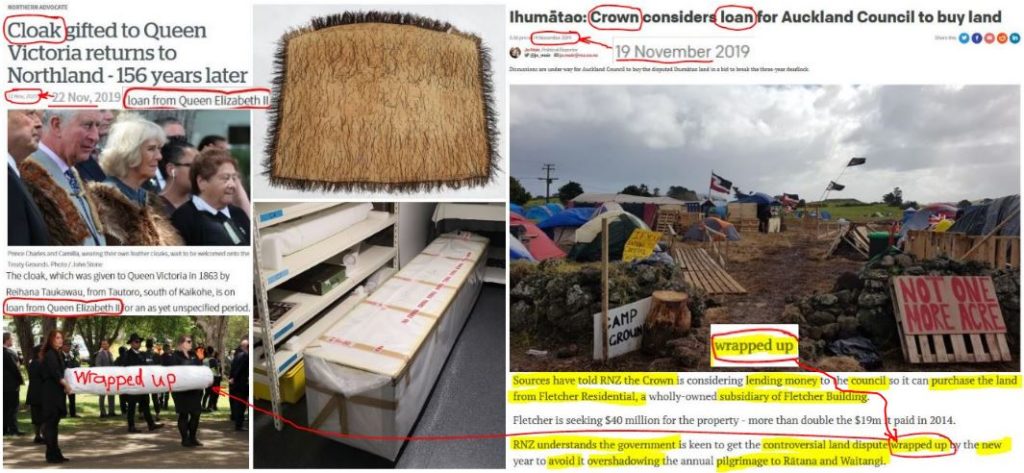
Especially, because the Royal Tour was first announced on Friday 26th July, which was the same day that NZ Prime Minister Jacinda Ardern and her Māori Labour Caucus back-peddled over the Ihumātao land dispute to announced a halt to construction supposedly to allow time for a resolution to be found amid a groundswell of public support the occupation just three days after 150 Police moved in to remove ten ‘squatters’.
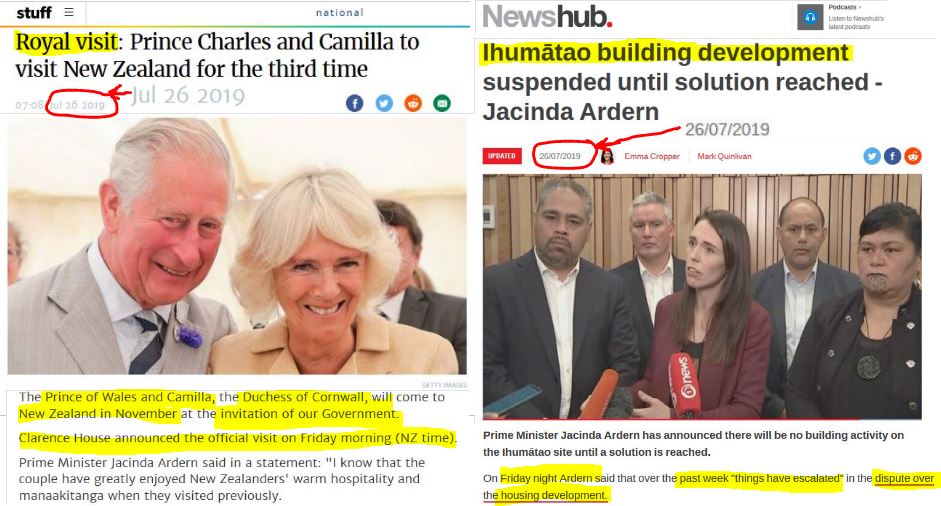
After the powhiri, Prince Charles met privately, inside Te Whare Rūnanga, with the descendants of siblings of Ngāpuhi chief Reihana Takauwau, who had no children. The loaning of the korowai is particularly manipulative because it also works like a bonding mechanism to bind the Crown and Ngāpuhi closer at a time when the Treaty negotiations ‘game’ has faltered. In effect, Prince Charles – whose ancestral lands comprise 203 squares miles, spread across 23 counties of England and Wale – was posted as a ‘hostage’ by the British Monarchy.
Therefore, the kneeling tane who handed the Prince of Wales the feather during the wero challenge appears to have been a symbolic signal by the Ngāpuhi leadership that they were willing cooperate with the settlement process, which requires the iwi to acknowledge the enduring sovereignty of the Crown in the Deed of Settlement. Ngāpuhi’s leadership do not appear to have fully thought their moves, and do not seem to have contemplated the extent to which they were being manipulated by a sophisticated criminal network that deftly deploys propaganda to distract, divide and defeat.
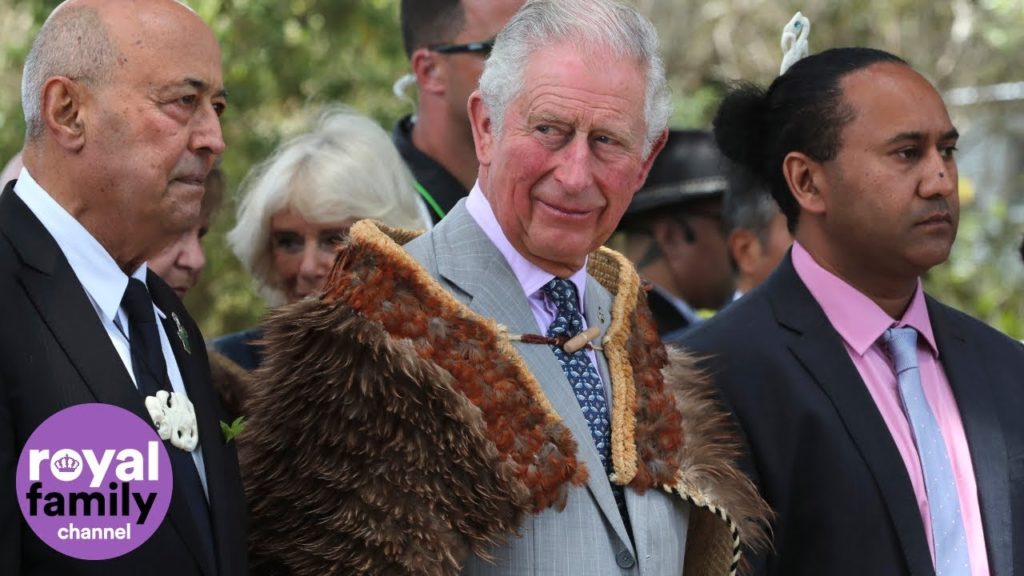
The splintered group that ‘represented’ the Ngāpuhi leadership at Waitangi displayed a remarkable lack of political balls, principled resolve and far-sighted vision, because they have, in effect, endorsed the British-penned Treaty myth – which they know to be untrue. They have, therefore, submitted to the Prince’s ‘Royal Charm Offensive’ rituals amid the tail-end of the ‘Tuia250 Encounters’ tour and which poignantly took place just after the 250-year mark of Captain Cook claiming to have performed a possession ritual at Mercury Bay in mid-November 1769.
378.1642-2020: Applied Discovery Doctrine in the Realm of New Zealand — A Course in the Waitangi Treaty Theatre Company’s Enduring Cession Myth
The Prince’s ‘Royal Charm Offensive’ rituals occurred at a time when the Treaty negotiations with Northland’s largest iwi, Ngāpuhi, is deadlocked.
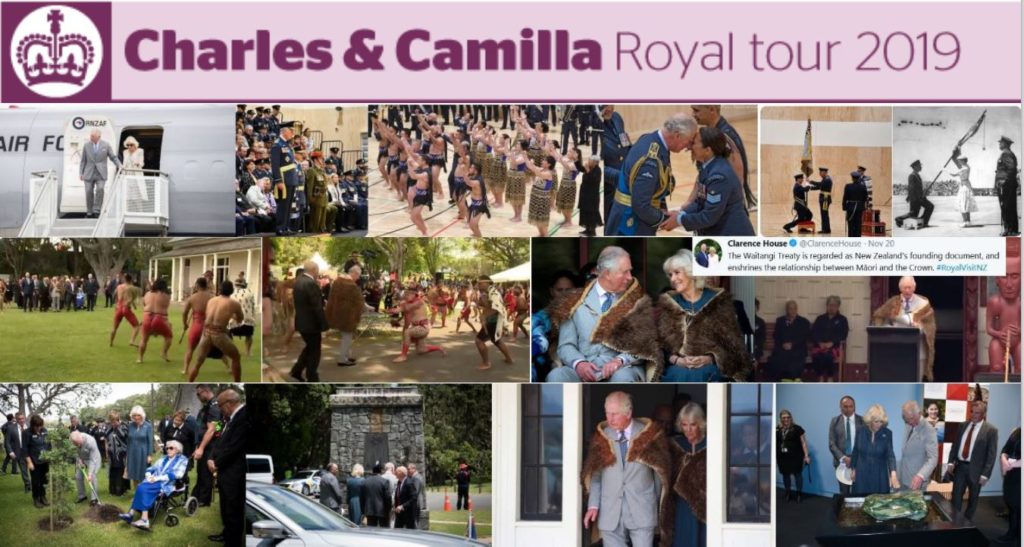
Meanwhile the Crown avoids conceding that the tribe never ceded, or signed away, sovereignty to Queen Victoria in 1840. From October 2014 to October 2017, the Key and English Ministries pursued a deceptive exclusionary black-balling strategy to distract, divide and defeat Ngāpuhi and other iwi and hapū, to avoid acknowledging that the Waitangi Tribunal’s October 2014 report – “He Whakaputanga me te Tiriti: the Declaration and the Treaty” – was correct in finding that there was no cession of sovereignty in 1840.
To this end, the Crown subversively sought to de-politicize Waitangi Anniversary Day, attack the mana of Ngāpuhi to coerce the Northland iwi to cede sovereignty by settling with the Crown, and corporatize the tribes of Northland through the activation of this malicious scape-goating mechanism. For these coercive, subversive and deceptive reasons, Key and English boycotted Te Tii Marae at Waitangi in 2016 and 2017, respectively – as The Snoopman showed in a two-year investigation, “Harnessing the Herd to Hide a Historical Heist” – first published on Waitangi Day 2018.
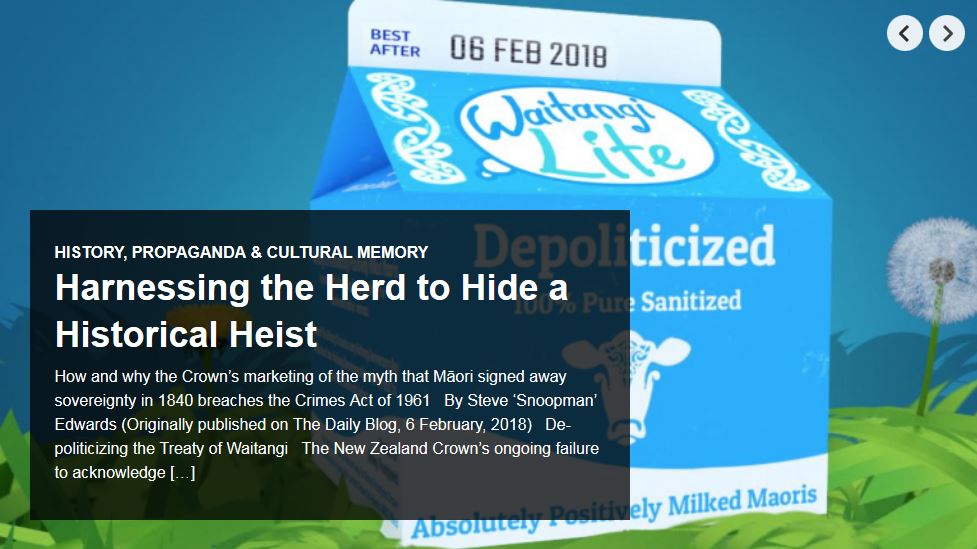
Since winning power in October 2017, Prime Minister Jacinda Ardern and Treaty Settlements Negotiations Minister Andrew Little and other Crown ministers, have recklessly maintained a contrived ignorance about the British Crown-created Myth of Cession.
The key finding of the Waitangi Tribunal was that the Ngāpuhi Treaty Chiefs believed they were conferring Queen Victoria the right to appoint a governor to rule over Pākekā, and did not wittingly sign away their sovereignty.
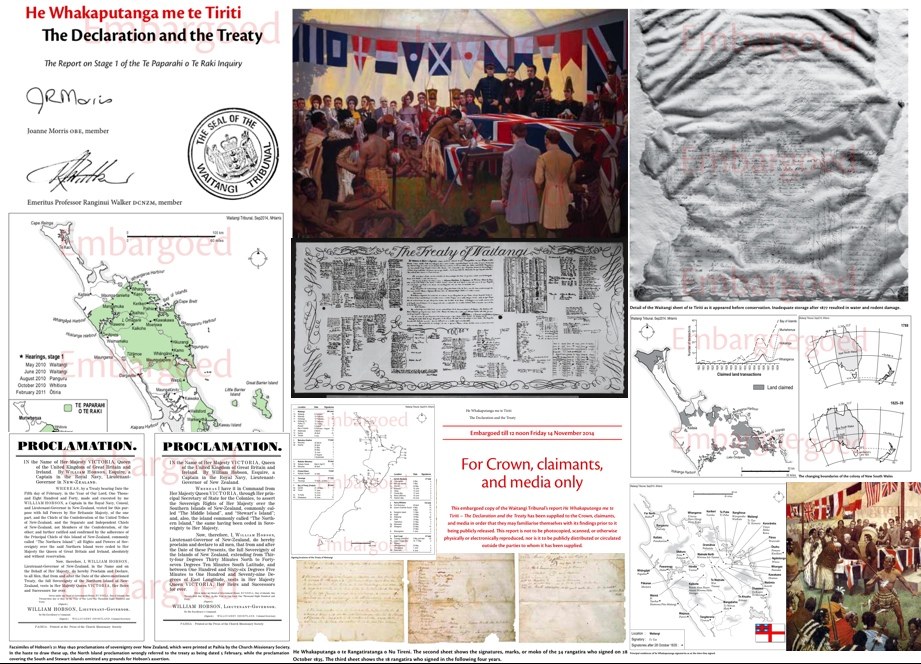
It turns out, a parallel Colonial Law Track was laid in 1839 and 1840 for the territorial acquisition and sovereignty takeover of New Zealand, which occurred through legal instruments prior, during and after the hawking of the nine Treaty parchments to Māori chiefs. The Treaty Theatre Track served to defuse Māori resistance by tricking the chiefs that they would retain their sovereign authority and power, while saving face for the British Parliament.
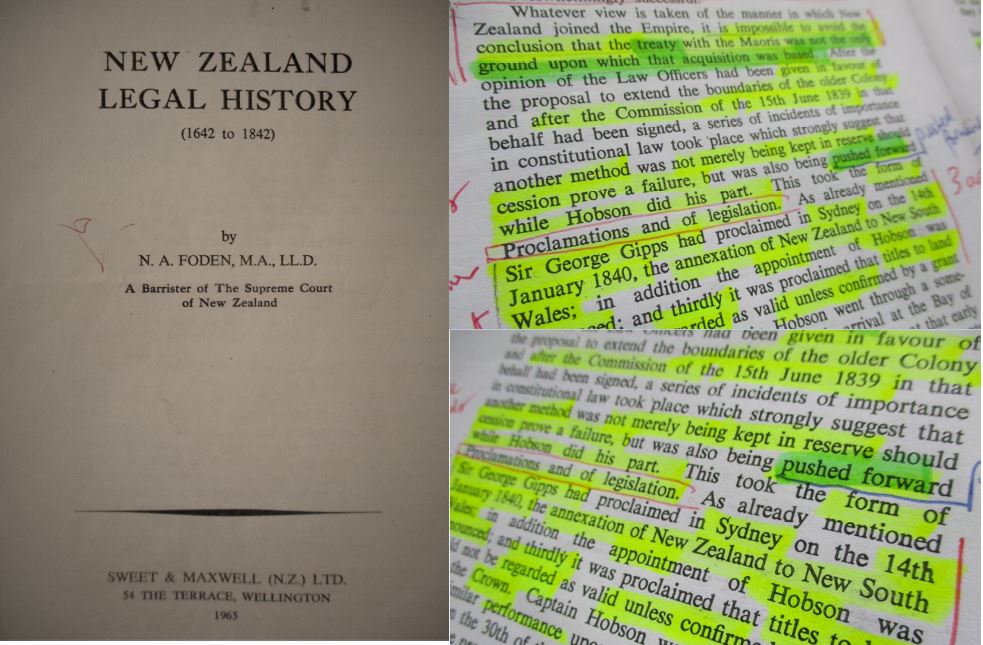
These moves, which were started and completed by the inky, feathery quill of Prince Charles’s great, great, great grandmother, Queen Victoria, perfected the incomplete title stealthily gained by Captain Bro. James Cook. On June 15th 1839, Queen Victoria exercised her Royal Prerogative Powers to sign a decree known as the Letters Patent of Boundary Extension that enlarged the boundary of New South Wales, which had the effect of enveloping all of the islands of New Zealand within the jurisdiction overseen by Governor George Gipps. This parallel Colonial Law Track to the Treaty Track was essentially complete on 16th November 1840, when Queen Victoria signed the Royal Charter for Severance (or Charter of 1840), establishing New Zealand as separate colony.
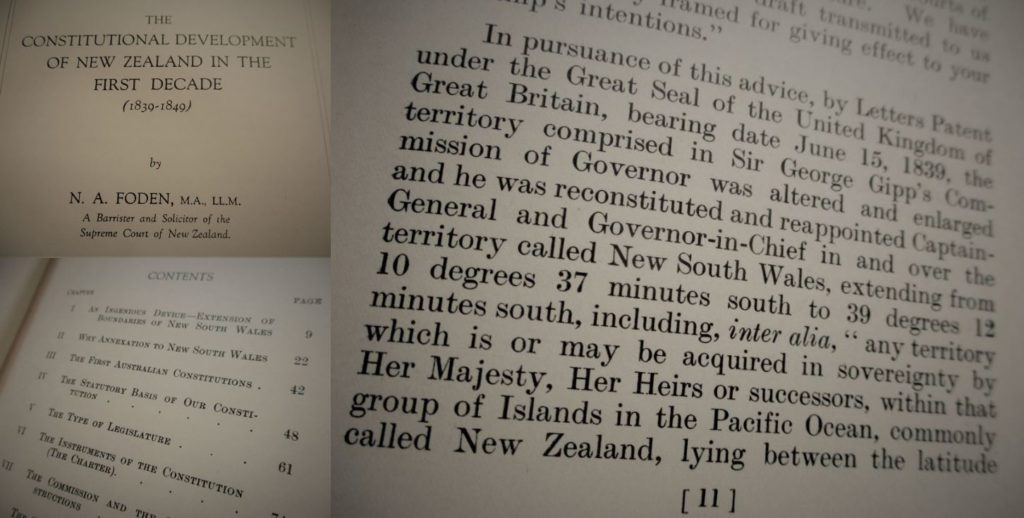
Historian Paul Moon found while researching his 2002 book, The Path to the Treaty, that in 1845 the Colonial Office in London registered New Zealand as a colony “Acquired by Settlement” in the year 1839 – a fact which J. I. Hetherington stated in his 1926 book, New Zealand: Its Political Connection with Great Britain.
Fascinatingly, Norman Foden’s ground-breaking books of 1938 and 1965 were written at a time before the discourses on language translation differences became commonplace in treaty scholarship. The implication is that even Foden, who was a barrister and solicitor of the New Zealand Supreme Court, missed just how cunning the ‘Treaty Cliqué’ were, since their ‘Waitangi Treaty Theatre Script’ spun on a fulcrum that involved the deceptively crafted, language translation differences.
In 1840, the 39 Māori signers of English language version of the Waitangi Treaty and the approximately 500 Māori signers of Māori language version, Te Tiriti o Waitangi – intended that their paramount authority would remain intact. In the 217-word long sentence that comprises the Preamble of the English version, Queen Victoria was alleged to have extended “Her Royal favour” to invite the Aborignees to cede sovereign authority to her, signalled the formation of Civil Government and justified this move to avert evil consequences of unregulated emigration. This rambling Preamble stated Her Majesty was “anxious to protect … [the] just Rights and Property” of the “Natives Chiefs and Tribes of New Zealand”.
Crucially, in the te reo version of the Preamble, “just Rights and Property” are rendered as “o ratau rangatiratanga, me to ratau wenua”, which meant “their chieftainship and their land”. The bearing of this difference is significant because “Civil Government” and “sovereign authority” were translated by Reverend Henry Williams into Māori as “kawanatanga”, or governance/governorship. Also, Rev. Williams translated “functionary” as “kai wakarite” which meant an administrator, mediator, negotiator or adjudicator, meaning Hobson’s role would have been understood by Māori as an official appointed by the Queen to make decisions sitting with or below rangatira, not above.
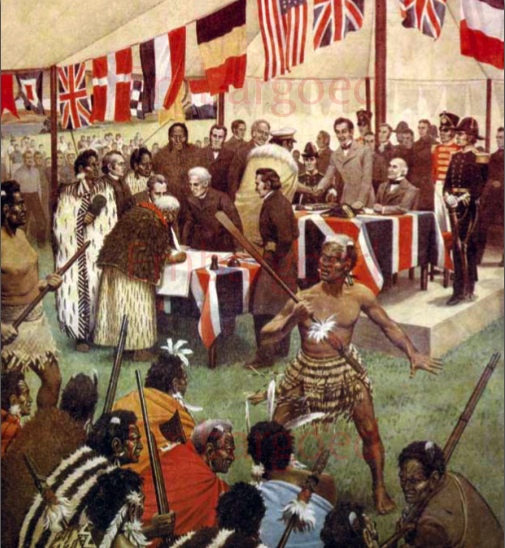
Reverend Henry Williams was well aware of the imperfections in the translation, and framed it in a way that would be agreeable to rangatira, whereby they would be led to believe a protectorate was being constructed and Queen Victoria recognized their independent authority or tino rangatiratanga. Historian and anthropologist, Dame Anne Salmond, pointed out that Rev. Williams had not made clear the sovereignty being ceded to Queen Victoria. Whereas, the land-swindling Rev. Henry Williams, whom owned 11,000 at the time of the Treaty signings, had learned from assisting Eruera Pare Hongi in the Māori version of the 1835 ‘Declaration of Independence’, how to clearly state the sovereign authority of a chief, his hapū and iwi. To the Waitangi Tribunal, Professor Salmond stated:
“If Williams had used the terms ‘ko te kingitanga ko te mana’ (as he did in He Wakapūtanga) to translate ‘sovereignty’ in Ture 1 [Article One] of te Tiriti, and asked the rangatira to cede these powers to the British Crown, it is almost certain that they would have been angry and affronted, and that the negotiations would have failed. Instead, he couched the cession to Queen Victoria as a tuku or release of ‘kāwanatanga”.
When vital consideration of the re-examined accounts of the circumstances that preceded the signings, the discussions rangatira had with Lieutenant-Governor Hobson, his agents and the missionaries, and the sly symbolic cession rituals of empire – are all laid bare – it is evident that rangatira were agreeing to the appointment of a governor to rule over unruly Pākehā, not Māori.
The failure of Williams’ to use his words to describe the stealthy export of sovereign authority to the British Crown via the deceptive device of the English text of the Waitangi Treaty, is precisely the point that scholars such as Ruth Ross, Ranginui Walker, Anne Salmond, Claudia Orange and Moana Jackson have explained clearly enough.
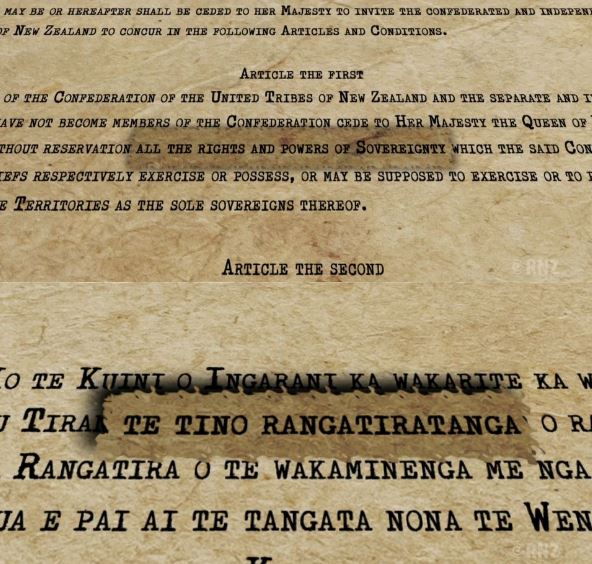
Government historian Richard S. Hill stated in his 1986 history of policing in New Zealand, that cession by treaty was a pretense to neutralize anticipated Māori opposition, stonewall representative civil government for settlers, and to deconstruct the façade of an ‘independent state’ of indigenous sovereignty designed by the British. Hill found New Zealand joined the British Empire on the basis of settlement by the continuous occupation of 2000 Britons, when it was annexed by Letters Patent of Boundary Extension that expanded the jurisdictional territory of New South Wales, on June 15th 1839 – while researching Policing the Colonial Frontier: The Theory and Practice of Coercive Social and Racial Control in New Zealand, 1767-1867, which was published in 1986 for the Department of Internal Affairs. This finding concurs with Norman Arthur Foden’s thesis in his 1938 work, The Constitutional Development of New Zealand in the First Decade (1839-1849).
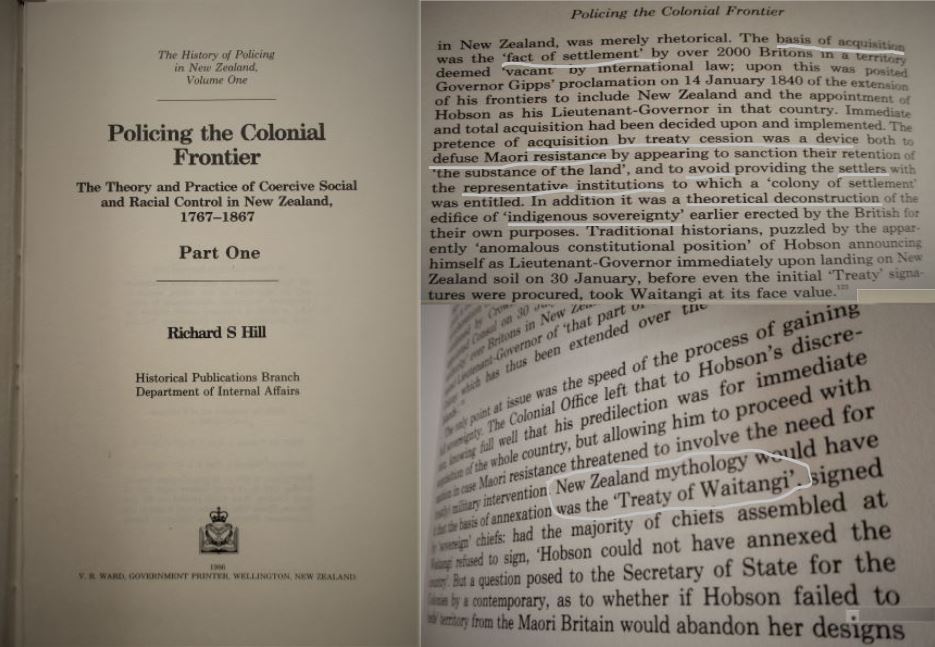
In fact – Richard Hill appears to be the only historian outside of the sub-field of ‘legal history’ whom has cited Foden’s work. Whereas, for instance, in A New Zealand Legal History, Peter Spiller, Jeremy Finn and Richard Boast cite Foden’s two books, they incorrectly claim the country’s legal history can be divided into five periods starting with the Crown Colony government (1841-53). They acknowledge that the British originally governed New Zealand from New South Wales, and stated that the Crown’s interests were set in place by legal structures at the outset of the Colony’s history in various official pronouncements in 1839-40, the Treaty of Waitangi itself, the Letters Patent of Severance of November 16th 1840 establishing New Zealand as separate colony and New South Wales and colonial Ordinances enacted in the years 1840-42. In spite of these legal moves, they not only fail to chronicle each of these moves with the others in the series on the Colonial Law Track. In other words, they failed to heed the broad argument of Foden’s book, The Constitutional Development of New Zealand in the First Decade (1839-1849) that there were two ‘legal’ tracks laid by the Crown to gain sovereignty by paper. Spiller, Finn and Boast state that the doctrine of pre-emption underpinned all of these moves, in which “the Crown reserved to itself the right to extinguish Māori customary title to land” and noted this doctrine was written into article two of the Waitangi Treaty and found its way into statute law at the first opportunity (while conspicuously, the Treaty itself was not ratified by legislation). Because the authors of A New Zealand Legal History failed to locate their book in the Doctrine of Discovery, and ignored Foden’s two ‘legal’ tracks thesis, the British Crown’s moves to acquire paper sovereignty over New Zealand are rendered as one track-laying vehicle to construct a colony.
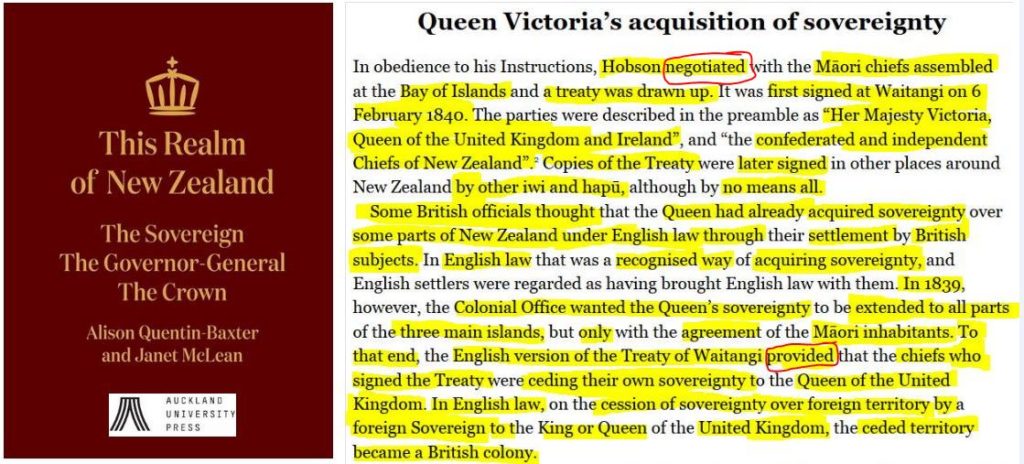
Similarly, Quentin-Baxter’s and McLean’s ‘groundbreaking’ 2018 book This Realm of New Zealand – which purports to be a scholarly account of how British sovereignty was gained, consolidated and evolved – let themselves off the hook when they typed, “we are conscious that this is very bald and incomplete account of events and one told entirely from a colonial and British law perspective”. By their ‘very bald and incomplete account’, the Queen’s acquisition of sovereignty started with Lord Normanby’s 14 August 1839 instructions to Royal Navy Captain Hobson, fails to state a date or legal instrument when they mention that the Queen had already enlarged the boundaries of New South Wales to include “… any Territory which is or may acquired in sovereignty by Us, Our Heirs or Successors within that Group of Islands in the Pacific Ocean, commonly called New Zealand”, and omits the fact that when Captain Hobson claimed sovereignty over New Zealand, he included the South and Stewart islands by right of discovery.
The central fiction of This Realm of New Zealand can be seen succinctly with just one paragraph appearing in the subsection, “The Queen’s Acquisition of Sovereignty” in “Chapter 2: Building the Modern Constitution”. With exquisite economy, Quentin-Baxter and McLean wrote:
“Some British officials thought that the Queen had already acquired sovereignty over some parts of New Zealand under English law through their settlement by British subjects. In English law that was a recognised way of acquiring sovereignty, and English settlers were regarded as having brought the English law with them. In 1839, however, the Colonial Office wanted the Queen’s sovereignty to be extended to all parts of the three main islands, but only with the agreement of the Māori inhabitants. To that end, the English version of the Treaty of Waitangi provided that the chiefs who signed the treaty were ceding their own sovereignty to the Queen of the United Kingdom. In English law, on the cession of sovereignty over foreign territory by a foreign Sovereign to the King or Queen of the United Kingdom, the ceded territory became a British colony.”
Crucially, Quentin-Baxter and McLean skipped the Māori language version, Te Titiri o Waitangi. This critical omission meant they did not have to explain how it was that the Colonial Office “wanted” the Queen’s sovereignty extended to all parts of New Zealand but only on the basis that the indigenous inhabitants agreed to cede all their sovereign rights and powers. The parties to the discussions to acquire New Zealand as a dependency of New South Wales also included the scheming British Undersecretary of State for the Colonies, Sir James Stephen (1836 to 1847), Crown lawyers, and HM Treasury. Quentin-Baxter and McLean circumvented the central tricky issue that ‘The New Zealand Treaty Theatre Company’ faced as they hawked the nine Treaty sheets around the coasts. Captain Hobson did not negotiate the Treaty with the Māori Chiefs. The English and Māori texts of the Treaty were written without any Māori participation. Whereas, in the 1835 ‘Declaration of Independence’, rangatira retained sovereignty on paper even while that document, in effect, purported to create a protectorate relationship with the King. (And every historian, legal scholar and Treaty teacher knows the extent of Māori participation in the two instruments).
With a calculated forbearance that hid the fact that eventually British Empire’s military resources would be required to transform the stealthy transference of paper sovereignty into substantive sovereignty of the soil, the Treaty Cliqué talked up the benefits, downplayed the concerns and obscured the central deception of their mission to treat. Had the Treaty Cliqué fully disclosed to Māori that they sought to drastically diminish their mana, accumulate their hapū political structures into tribal units for later de-tribalization and transfer their rangatiratanga to Queen Victoria, that Treaty Cliqué would likely have lost their heads.
It is therefore conspicuous that the operative verb ‘provide’ used by Quentin-Baxter and McLean in the sentence, “the English version of the Treaty of Waitangi provided that the chiefs who signed the treaty were ceding their own sovereignty to the Queen of the United Kingdom” – actually obscures the fulcrum of deliberate language translation differences on which the two versions of the Waitangi Treaty spun. It would have been more accurate to use the verb ‘construed’, since the Waitangi Treaty Cliqué were stealing sovereignty by pen, paper and presents, and providing the Treaty Chiefs, other non-signing rangatira and Māori in general with an epic swindle that contained exquisite layers of evil. These layers are still being obscured by Very Important Visitors such as the Heir Apparent to the British Throne, the Prince of Wales, or Charles of the Royal Family formally known as House of Saxe-Coburg and Gotha – with the pretense of humility, honesty and honourable highness.
Quentin-Baxter and McLean go on to say that Hobson’s proclamations of May 21st 1840 were “instruments of annexation”. Because they let themselves off the hook about explaining the awkward contradiction of Hobson claiming sovereignty over New Zealand on basis of cession by treaty for the North Island and by discovery over the South and Stewart islands, they were able to state, “recent scholarship suggests that framers of the English text of the Treaty intended government over the settlers, for the protection of Māori.” – without blushing. Evidently, Māori customary law and tribal governance structures were to be respected and apparently such plurality was consistent with British sovereignty.
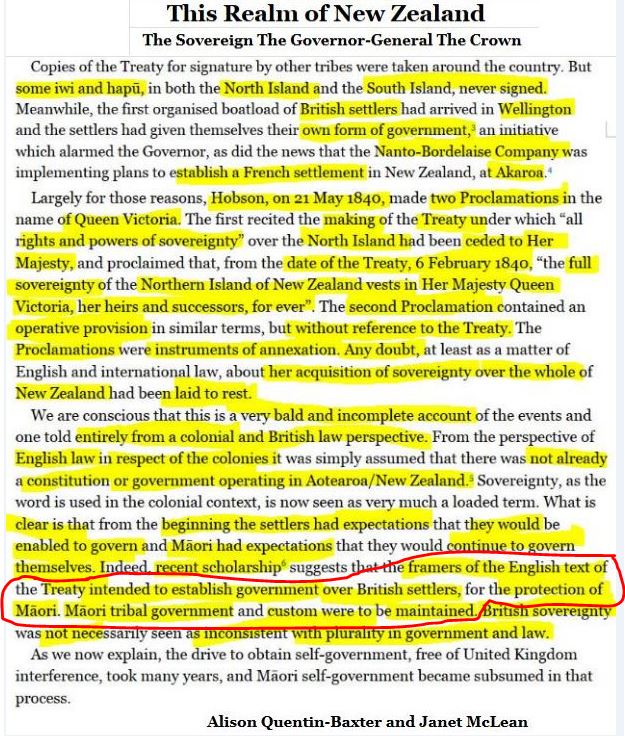
The authors of This Realm of New Zealand were at least consistent in their bunk logic. They omitted mention of the 1835 ‘Declaration of Independence’, which meant they did not have to discuss how Busby’s so-called ‘Declaration of Independence’ served to anchor a new norm for Māori – signing an international agreement. The signing chiefs did not realize the full implications of New Zealand becoming a pseudo-British Protectorate, which was an incremental step on the path to losing substantive sovereignty.
Busby’s other activities also anchored new norms to condition Māori chiefs to enter into political, legal and commercial arrangements with the British.
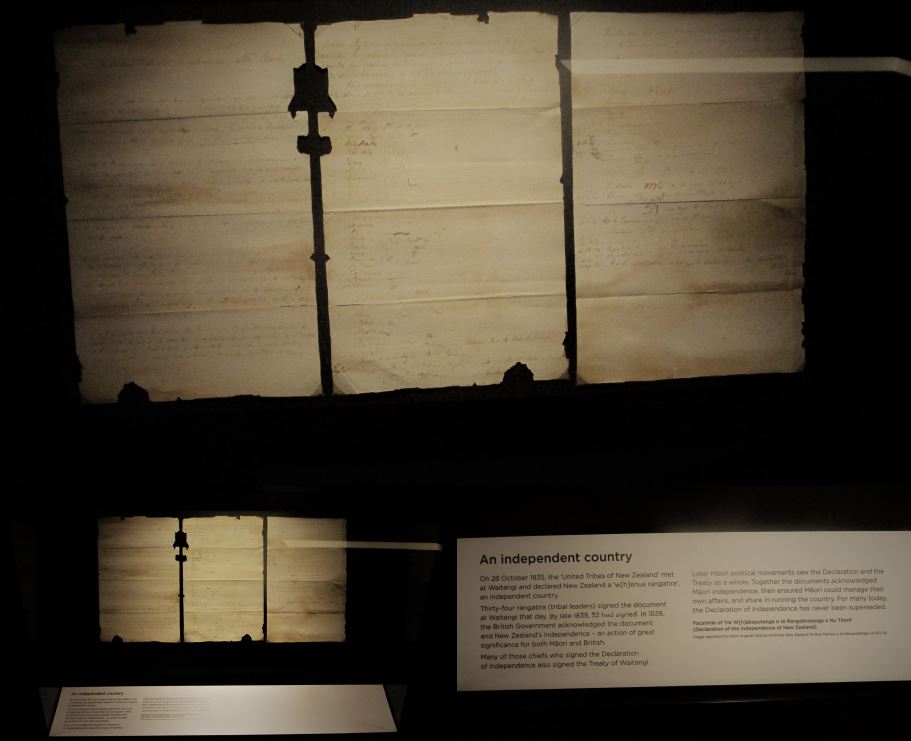
In other words, the Treaty signing rituals was a major visible step of a ‘long-game’ that would climax with casting unwitting Māori into wedges of war, where struggles over soil would be fought to transform paper sovereignty in substantive sovereignty. To be more precise, the Treaty of Waitangi was a manifestation of the Doctrine of Discovery element of Preemption/European Title. British Resident James Busby’s flag for national shipping of 1834; his precedent-setting ritual humiliation of Chief Rete by burning his hapu’s huts, confiscating 130 acres and calling the place, Ingarani (the Māori transliteration for England); and his 1835 ‘Declaration of Independence’ were on the separate track in a continuum to the Treaty.
With these fictions, failings, omissions and caveats, it is not surprising that these authors of New Zealand’s legal history do not cite Norman Foden’s two books, nor do they locate their work in the Discovery Doctrine. For these reasons, This Realm of New Zealand is a fraudulent work that deserves to be thrown at walls by readers, burned at the stake on every marae paepae and completely revised by the publisher, Auckland University Press.
For their part, the British settlers – which included British Protestant missionaries from 1814, and British Resident James Busby, officially-appointed in 1833 – played Māori for time with a series of moves that were, in effect, Discovery Rituals calculated to incrementally wrest sovereignty from Māori without ‘the natives’ fully understanding how exactly it had occurred. This included gaining large parcels of land, on a scale comparable to the aristocratic feudal estates in Britain, that displaced chiefs who thought they were granting land-use rights to share the territorial resources akin to a rent payment for a lease, rather than a poultry payment for exclusive eternal enjoyment.
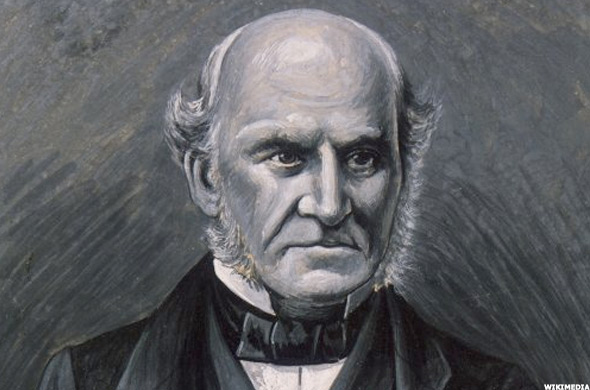
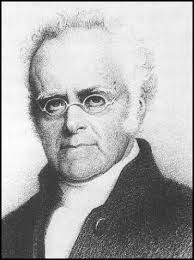
The beneficiaries of these stealthy land transfers included a former Royal Navy lieutenant appointed as Anglican missionary to the Bay of Islands, Reverend Henry Williams, who along with his Cambridge-educated brother William, worked busily in the 1820s and 1830s saving souls and acquiring an 11,000-acre estate in Northland – as Stevan Eldred-Grigg put it in his seminal The Rich: A New Zealand History. By swindle and stealth, the Protestant missionaries had gained a foothold while feigning to be friends with ‘the natives’.
Indeed, New Zealand’s first posted official, British Resident James Busby, whose 1835 ‘Declaration of Independence’ was first signed on 28 October 1835, was a key player in the exclusionary blackballing strategy to game Māori.
While at the Port of Sydney and about to embark for New Zealand in early 1833, Busby allegedly learned about the vexed matter of New Zealand-made ships that were impounded by Customs for entering in Sydney’s port without displaying a national flag – as far back as 1828. After this serendipitous encounter, Busby exploited the matter to get a national flag for Māori shipping as a cause célèbre mechanism to weld rangatira into a formalized collective federation of national purpose.
To that end, on March 20th 1834, Busby lured his chosen rangatira aboard the HMS Alligator, to select a national flag for shipping. The chiefs, whom came wearing ceremonial cloaks for the occasion, had to prostrate themselves to get under a roped-off section inside a makeshift ‘tent’ made of sails on the deck. Curiously, the flag the chiefs’ ‘chose’ – by no means unanimous and by a thin slither – just happened to ‘pick’ the St George’s Cross, a motif that appears everywhere in English heraldry and is the symbol of England’s national flag.

The choice gets more curious when it is learned that the Templar Knights adopted the Red Cross in 1145, and French troops used it during the Third Crusade or the Kings’ Crusade, that was co-sponsored by Phillip II of France and Henry II of England, while English troops used a White Cross in 1188. George of Capadocia (modern day Turkey) or St. George, the Patron Saint of England, is venerated as a legendary champion of Truth and defender of the Christian religion.

The popular legend of St George valourizes his role as a soldier who saves a princess from the maw of a hungry dragon that won the customary right to eat sheep and children. With exquisite synchronicity, St George the Christian Knight just happened to be passing through the terrible scene. St George astutely saw an opportunity to expand the Church’s franchise and offered to save the princess on condition that the traumatized people convert to Christianity.
Therefore, Busby had successfully exploited the matter to get a national flag for Māori shipping from early 1833, as a cause célèbre mechanism to weld rangatira into a formalized collective federation of national purpose. Because this cause célèbre presented itself during his serendipitous encounter in Sydney – where he just happened to learn as he was leaving for New Zealand about New Zealand-made ships being impounded by Customs for entering in Sydney’s port without displaying a national flag – it would appear Busby riffed off English Cult of St. George to cast himself as a living legend. Thus, after this serendipitous encounter before leaving port, official British Resident James Busby saved Māori shipping commerce from the maw of the British Dragon of Maritime Traffic Infringements on the promise that they would convert to British Maritime Law, with the adoption of a national flag, complete with the St George’s Cross motifs and a shipping register.
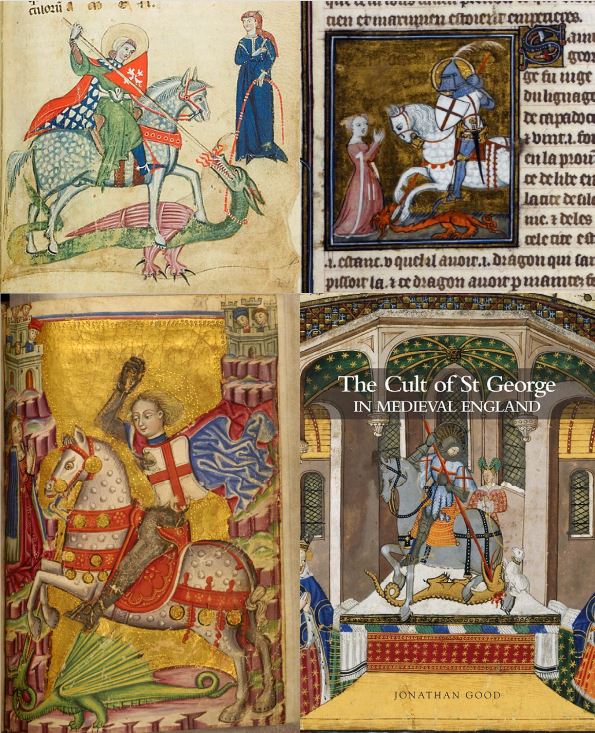
The Royal Navy ‘recognized’ this flag with a 21-gun salute by the HMS Alligator, a British military tradition reserved for events involving heads of state. King William IV also ‘recognized’ the national flag and offered the British Admiralty’s protection of Māori shipping. It was also ‘recognized’ by the British Government and Royal Navy. In essence, the ‘recognition’ of the national flag for shipping was because Māori had inadvertently volunteered their international shipping to be under the jurisdiction of British Maritime Law. This expansion of the British Maritime franchise was an exquisite example of imperial incrementalism, embedded with the Discovery Doctrine elements of Christianity as symbolized by the St George’s Cross motifs, and Tribal Limited Sovereign and Commercial Rights, which assumed that indigenous peoples lost some of sovereign rights and powers on First Discovery.
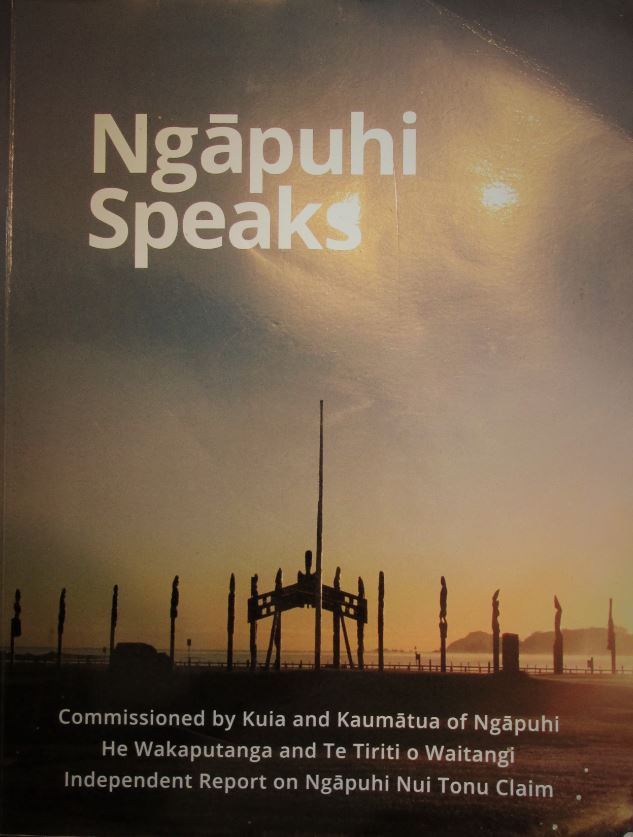
Ironically, New Zealand’s first British official, James Busby, was an agent provocateur. Busby swindled 143,000 acres from Māori before the Treaty was signed, as Ned Fletcher and Sian Elias pointed out in their paper, “A Collusive Suit to ‘Confound’ the Rights of Property through the Length and Breadth of the Colony’?: Busby V White (1859)”. Busby had interfered with Chief Rete’s logging trade, which was his hapū’s economic activity, and also because Busby had wrested control of large areas of land – as can be gleaned from reading the 2012 report commissioned by Kuia and Kaumātua of Ngāpuhi, entitled, Ngāpuhi Speaks: He Whakaputanga o te Rangatiratanga o Nu Tireni and Te Tiriti o Waitangi.
On 30 April 1834, Chief Rete inflicted a muru, or ritual compensation in provocative circumstances that led to the sacking of Busby’s residency storehouse, that ended with a musket shot splintering Busby’s house door frame, which unfortunately only cut the British Resident’s face. Subsequently, Busby inflicted his own retribution by confiscating Chief Rete’s land, estimated to be 130 acres, at the village of Puketona. Busby had Rete’s relations burn down his huts, thereby inflicting a Humiliation Ritual of Rete’s hapū. Busby added the insult of naming the confiscated block, Ingarani, the Māori transliteration for England, and pompously claimed he had taken possession as the King of England’s farm.
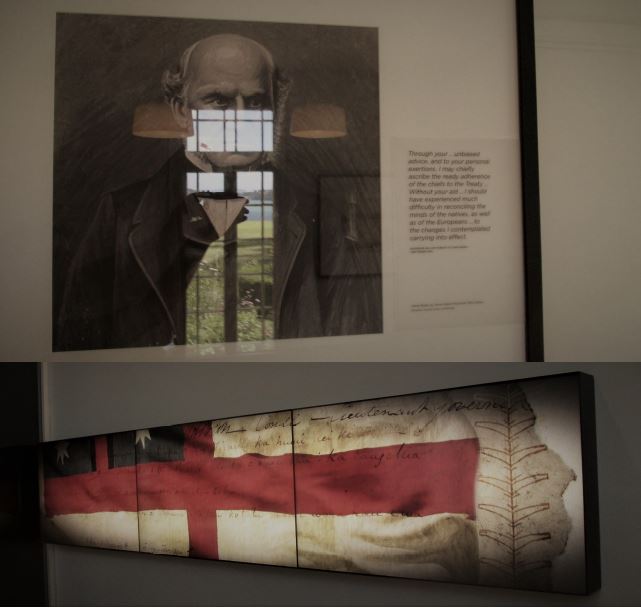
Furthermore, it was Busby who was the primary drafter of the English version of the Treaty. He inserted a clause for British settlers to have representative rights, which Captain Hobson had erased. Tellingly, the Royal Navy captain, as Lieutenant-Governor, proclaimed sovereignty over Te Wai Pounamu on the grounds of Cook’s discovery on 21 May 1840 – before the HMS Herald and Cook Strait treaty copies, with signatures and marks of chiefs from the Middle Island (or South Island), were returned to him. Captain Hobson moved to declare sovereignty over the entire country not simply because the Treaty sheets were taking too long to return. He panicked because he received news that the New Zealand Company settlers’ had declared a constitutional government at the settlement of Port Nicholson (now Wellington City), which was said to have been ratified by ‘native chiefs’ on March 2nd 1840 – as the Waitangi Tribunal noted in its October 2014 Report, “He Whakaputanga me te Tiriti: the Declaration and the Treaty”. Hobson evidently regarded the settlers moves as “high treason”.
Importantly, most historians, legal scholars and Treaty teachers fail to see the spike in active symbols of Discovery in the form of proclamations, legislation and letters patent produced between from the June 15th 1839 boundary extension of New South Wales and through to May 3rd 1841 – when Captain Hobson performed a vocal symbol oath to declare himself Governor and Commander-in-Chief of the colony – as a crucial parallel track to the Treaty theatrics.
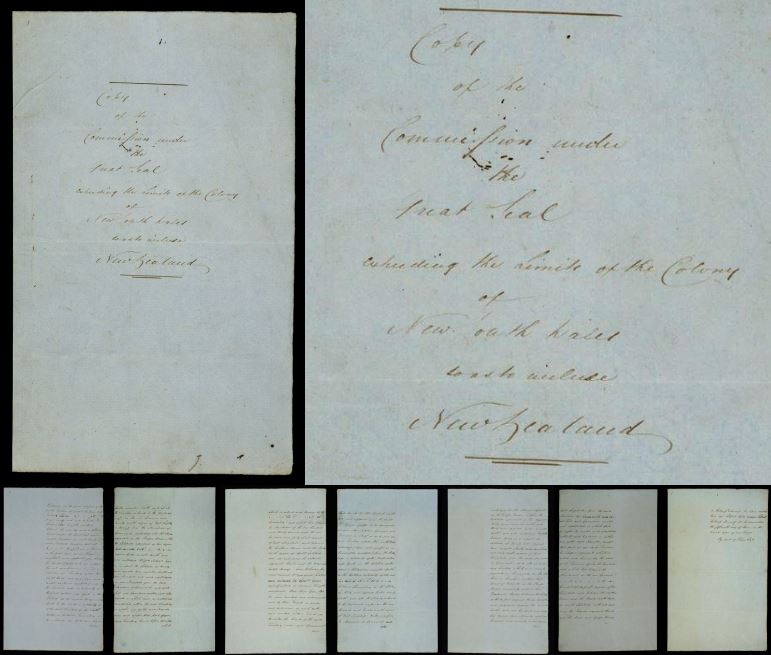
this Letters Patent of Boundary Extension of 15 June 1839 extended the limits of the colony of New South Wales so as to include New Zealand. Archives New Zealand Archway Item ID:R21434429.
The parallel track laid to the Treaty Theatre Track to gain British paper sovereignty were: (1) a Letters Patent of Boundary Extensions signed by Queen Victoria, dated June 15th 1839, which expanded the jurisdictional boundary of New South Wales to include all of New Zealand; (2) a Letters Patent of Amended Commission to Governor George Gipps making him Governor of New Zealand, a new dependent colony of New South Wales, signed by Her Majesty’s Command bearing Lord Normanby’s name on July 30th 1839; (3) Governor George Gipp’s Proclamation of January 5th 1840 establishing N.Z. Customs; (4) Gipp’s three Proclamations of January 14th 1840 notifying the extension of the boundaries of New South Wales to include New Zealand, Captain Hobson’s Commission as Lieutenant-Governor and a notice that land Sales after January 5 1840 would not be valid and land sales before that date would be subject to official scrutiny; (5) Captain Hobson’s Proclamation of January 30th 1840 declaring himself as Lieutenant-Governor in an Anglican Church in Kororāreka before 300 settlers and 100 Māori; (6) Lieutenant-Governor Hobson’s Proclamation of May 21 1840 claiming sovereignty over the North Island on the basis of cession by Treaty and over the South Island on the grounds of Cook’s Discovery; (7) the New South Wales Continuance Act (or the “New Zealand Act of 1840”) with a separation empowering clause to sever New Zealand from its status as a dependency of New South Wales without expressly naming New Zealand, was passed in the NSW Legislature in May 1840 and the New South Wales Continuance Act was passed in Britain on 7 August 1840, with the separation empowering clause to erect a separate Colony of out of those islands considered as Dependencies of New South Wales; (8) Ratification of Hobson’s sovereignty Proclamation in the London Gazette on October 2 1840, after they were received in London on September 28 1840; (9) the Royal Charter for Severance (or Charter of 1840), signed by Queen Victoria and dated 16th November 1840 establishing New Zealand as separate colony; (10) the Governor’s Commission of 24 November 1840; (11) the Royal Instructions of December 5th 1840; and (12) Hobson’s oath as Governor and Commander-in-Chief on May 3rd 1841, which was notification that New Zealand was no longer a dependency of New South Wales. These moves to gain sovereignty over New Zealand made prior to, during and after the signings of the 1840 Waitangi Treaty were the real means by which the British Crown laid claim to paper sovereignty, and were, in effect, the application of the Doctrine of Discovery.
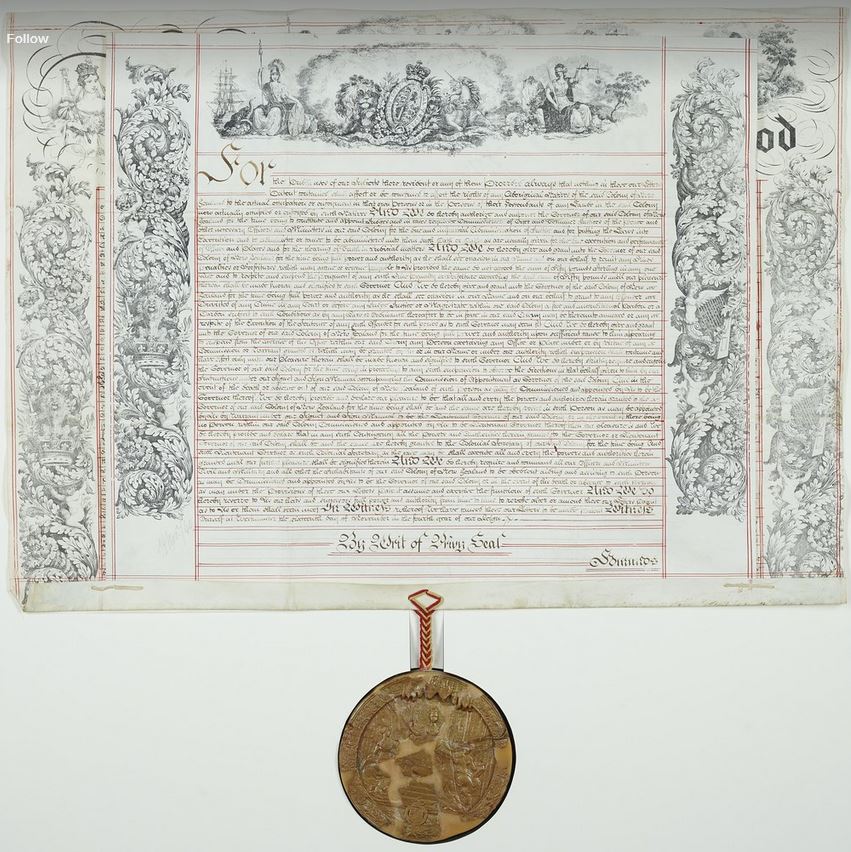
In this view, chief Makoare Taonui deftly grasped the British game play at Mangungu, Hokianga at a Treaty Signing Ritual on 12 February 1840, where 56 chiefs signed after a full days’ debate and decisive assurances from Protestant missionaries that the Treaty would be positive for Māori. Taonui pointed out that the British Crown had sought by stealth to gradually solidify its position in New Zealand. First, through the presence of the Protestant missionaries, then official British Resident James Busby’s initiative to entice the Māori chiefs to choose a national flag for Māori shipping on 20 March 1834, pacification through gift-giving and then the arrival of Royal Navy Captain William Hobson (1792-1842), as Dame Claudia Orange stated in her seminal 1987 book, The Treaty of Waitangi. In other words, these Discovery Doctrine rituals were anchoring new norms to draw the Māori chiefs incrementally into the British Masonic Empire’s jurisdiction.
Whereas, Hobson’s declaration of sovereignty over the South Island and Stewart Island on the grounds of discovery, proves that the parallel track pushed forward was done so in accordance with international law, colonial law and English constitutional law – and were consistent with the Discovery Doctrine.
Because those legal mechanisms were laying the parallel track to forge a colony out of independent Māori nations, and because a treaty between a European Maritime Power and a native race would ordinarily not be accepted in international law, the appearance of cession by treaty hinged upon the innovation of a native-tongue parchment. That way, the Treaty Cliqué could claim the English language version was a copy of the Māori version, thereby reversing its whakapapa.
And, besides God’s ‘men of the cloth’ would not deceive natives. In this naïve view, historian Michael Belgrave emphatically stated in Historical Frictions: Maori Claims and Reinvented Histories, it was not in Henry Williams’ character to deliberately deceive the Māori chiefs.
Rather ironically, Belgrave explains away Williams’ failure to use ‘mana’ and ‘rangatiratanga’ to denote sovereignty because, evidently, those words would have been “inappropriate” to describe transference of power. The failure of Williams’ to use his words to describe the stealthy export of sovereign authority is precisely the point that scholars such as Ruth Ross, Ranginui Walker, Anne Salmond, Claudia Orange and Moana Jackson have explained clearly enough.
The failure by many historians, legal scholars and Treaty teachers to see the 1840 Waitangi Treaty as theatre to mask the separate track set in motion with Queen Victoria’s Letter Patent to make New Zealand a dependent colony of New South Sales on June 15th 1839 – in effect, renders Captain Hobson’s move to declare sovereignty over the South Island and Stewart Island on the basis of Cook’s Discovery, as simply a curious phenomena – if it gets mentioned. For instance, in his 2018 Waitangi: A Living Treaty historian Matthew Wright noted Captain Hobson’s May 21 1840 declaration claimed the North Island was ceded by treaty while the South and Stewart islands were gained by right of discovery – following the Royal Navy captain learning of the New Zealand’s company’s settlers attempt at Port Nicholson gaining chiefly signatures for their written constitution. Wright downplays the Hobson’s grounds of discovery claim over the South Island and Stewart Island by stating “in some ways it made no great difference because, in general, Major Thomas Brunbury’s efforts aboard the HMS Herald to gain signatures from South Island chiefs, “were dismal”. But, Wright failed to locate his Waitangi: A Living Treaty in the Discovery Doctrine and so he failed to correctly identify the phenomena he was examining. Wright recounts that Reverend Henry Williams’s son, who Edward accompanied Major Brunbury on the mission to treat, ‘jotted the moment in his diary’ when the crew of HMS Herald took possession of Stewart Island, by right of Cook’s discovery:
“… after the men had had their dinner, the officers, and some of the ship’s company, together with the marines, went on shore, and after the proclamation was read and the flag hoisted, the marines fired a feu de joie’ (‘fire of joy’ salute), after which we gave three cheers to the Queen … when the ceremony was over, we rambled about the the bush till three o’clock, and then returned on board … ”
Wright goes on to say that on June 10th 1840, Brunbury sailed to nearby Ruapuke Island where they gained the signature of Chief Tuhawaiki, who was evidently dressed like a British Aide de Camp (or batman to an official, aristocrat or royalty), whom had just returned from Sydney. But because his book is not located in the Discovery Doctrine, power crime theory or the revolutionary dynamic, his readers are not really enlightened to what was really going when he said that with a little over a dozen signatures for the South Island, Major Brunbury declared ‘cession of the Middle Island was completed’ and that he made this declaration of sovereignty across the South Island – unaware of Hobson’s proclamations made five weeks earlier.
But because Wright, like the Waitangi Tribunal and many others, failed to model the British takeover as a crime of power involving deceptive tricks, stratagems and devices, he failed to detect, code and categorize the phenomena as proofs of conspiracy located in power crime theory. For instance, the journal record of Edward Williams, who co-drafted the Maori text translation from Busby’s English language draft of the Waitangi Treaty, is rife with an account of Discovery possession rituals performed on Stewart Island, in the absence of any Māori.
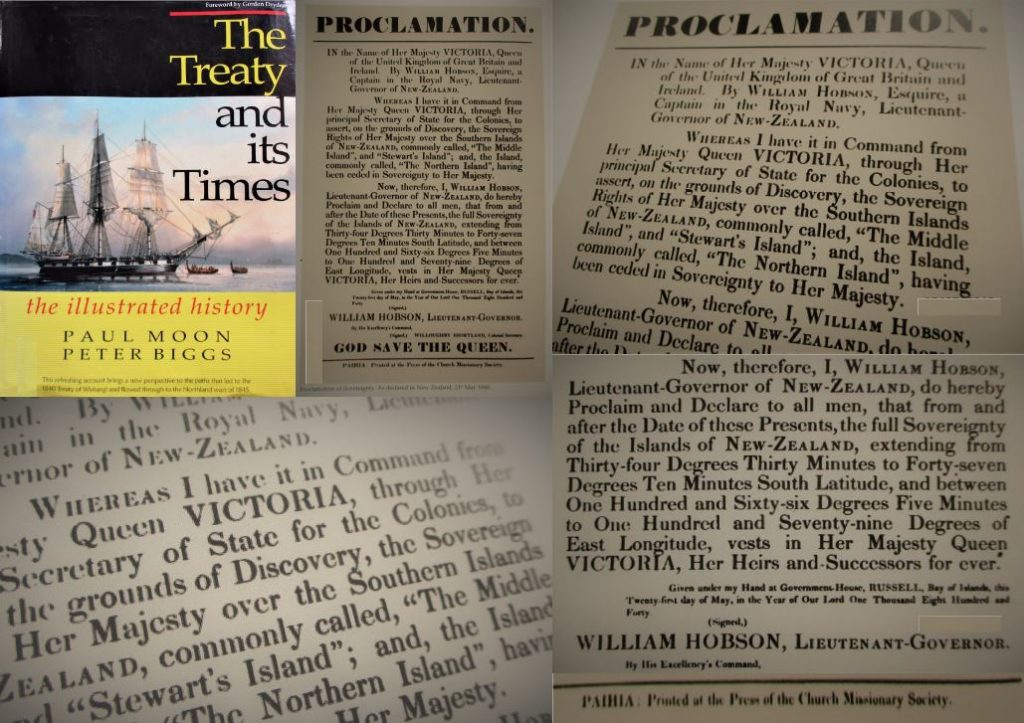
In The Treaty and its Times, Paul Moon and Peter Biggs printed Hobson’s proclamation claiming sovereignty over the Southern islands of New Zealand “on the grounds of Discovery”, by Proclamation on May 21 1840, as well as in the Great Britain’s Parliamentary Papers. Despite taking Hobson’s phraseology to devote an entire chapter, “On the Grounds of Discovery: Proclamations of Sovereignty” Moon and Biggs claimed in the previous chapter, “Is the Land Not Gone Already: The Treaty of Waitangi”, that New Zealand could not be annexed by right of discovery. To pull off this intellectual gymnastics, they forgo performing scholastic due diligence by failing to properly research the ‘Terra Nullis’ phenomena that they misspelled while they mentioned the doctrine in passing as ‘a land without people’. As the authors of Political Theory and the Rights of Indigenous Peoples, stated, terra nullius was adapted by the European Maritime Powers to inhabitants of the ‘New World’, whom were considered to lack full political rights because they were not Christians busy cutting vast swathes of forests for sheep and cattle to graze and therefore they were deemed too ‘primitive’ to be considered ‘sovereign’.
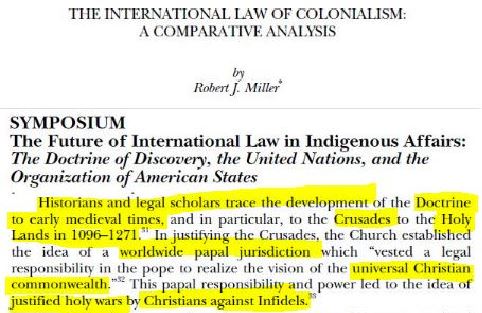
European legal scholars from covetous European nations reworked the Vatican Empire’s terra nullius determining they could also gained property and sovereign rights over ‘undiscovered’ lands and also indigenous peoples upon First Discovery, in territories claimed by a European Catholic Power such as Spain or Portugal.
However, the titles were considered incomplete even if the European nation took possession on paper, following the performance of discovery rituals such as raising flags and claiming the territory for a royal or papal monarch. However, a European Title could only be produced from First Discovery if the European country occupied and possessed their newly found lands within a reasonable period, to complete the annexed title. This often occurred by fort building and establishing settlements.
As Miller wrote in his paper The International Law of Colonialism: A Comparative Analysis, presented at The Future of International Law in Indigenous Affairs in 2012, that terra nullius element of the Discovery Doctrine not only meant lands possessed by no one. Terra nullius also referred to inhabitants lands deemed vacant or waste whenua because Europeans either refused to recognize indigenous forms of land use, customary rights and complex subtle relationships with the whenua. Professor Miller stated that Europeans were very radical and inconsistent in their justifications for applying terra nullius to indigenous occupied lands.
With a failure by New Zealand’s historians, legal scholars and Treaty teachers to firmly anchor their arguments in the British Crown’s stealthily sly application of the Discovery Doctrine to takeover New Zealand by a parallel track, it is not surprisingly then that the Waitangi Museum displays an edited version of Captain Hobson’s Sovereignty Proclamation of May 21 1840. This version of the Church Missionary Society-printed Proclamation, which omits the phrase “on the grounds of Discovery”, is like many artifacts in this museum – a collection that lacks a cohesive, clearly stated position on the British takeover of New Zealand, and therefore reinforces the Myth of Cession (despite a few exhibits and a video presentation that points to the hidden agendas).
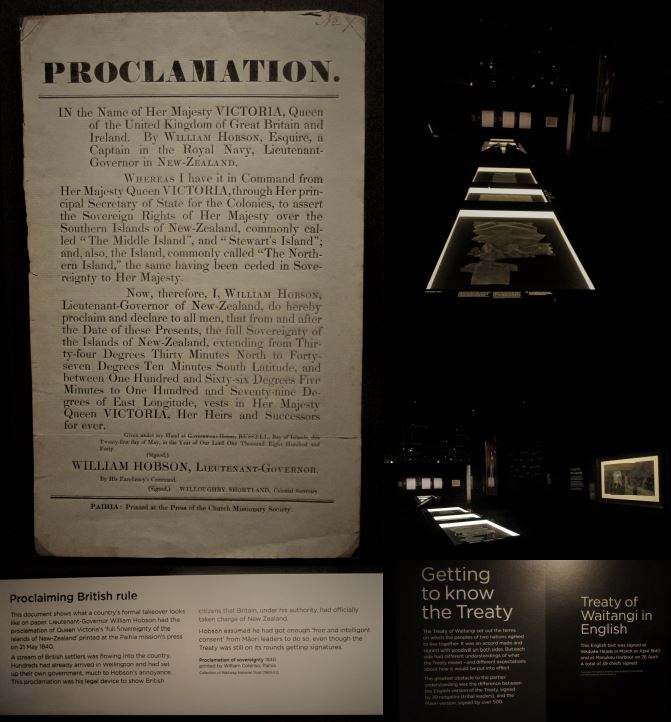
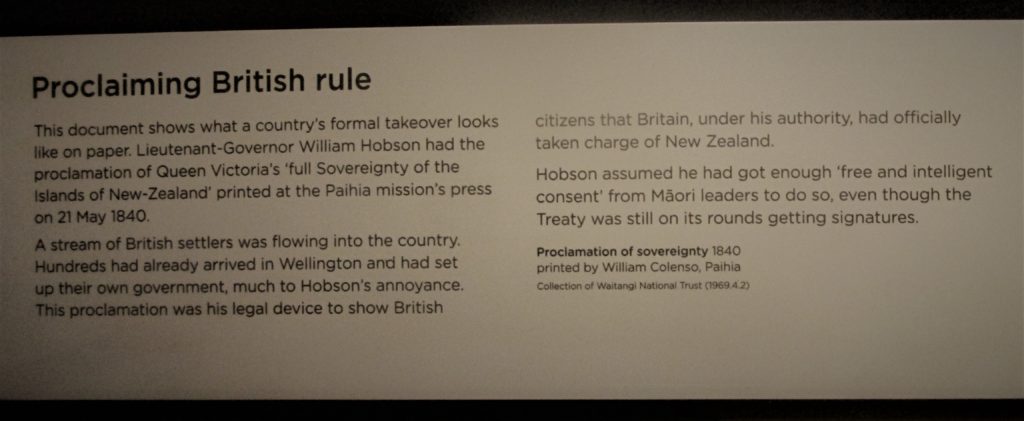
In other words, this parallel legal track to the Treaty Signature Rituals – which was first authorized by Queen Victoria’s Letters Patent of Boundary Extension of June 15th 1839 – become a done-deal with Her Majesty’s subsequent royal seal of approval by Letters Patent of Severance on November 6th 1840. At that moment, New Zealand was established as a separate colony from New South Wales with half the country claimed on grounds of Cook’s discovery, while the other half was claimed by construing treaty cession had occurred with the ‘free and intelligent consent’ without acknowledging the in-built weaponization of time to gain new jurisdictional space for the British Masonic Empire.
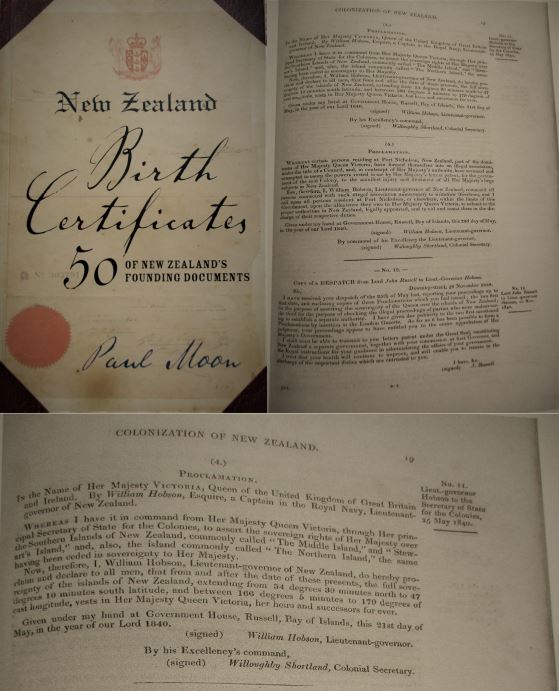
After all, the 1840 Waitangi Treaty Signing Rituals which had occurred around the coasts with unseemly haste, thereby demonstrating that Māori as tribal peoples had no adequate means to deliberate, propose solutions and counter what was really an exclusionary black-balling strategy that avoided full disclosure. This epic swindling exercise was so novel, Māori did not know to nail up signs at their pa gates saying, “No treaty hawkers – please get!”
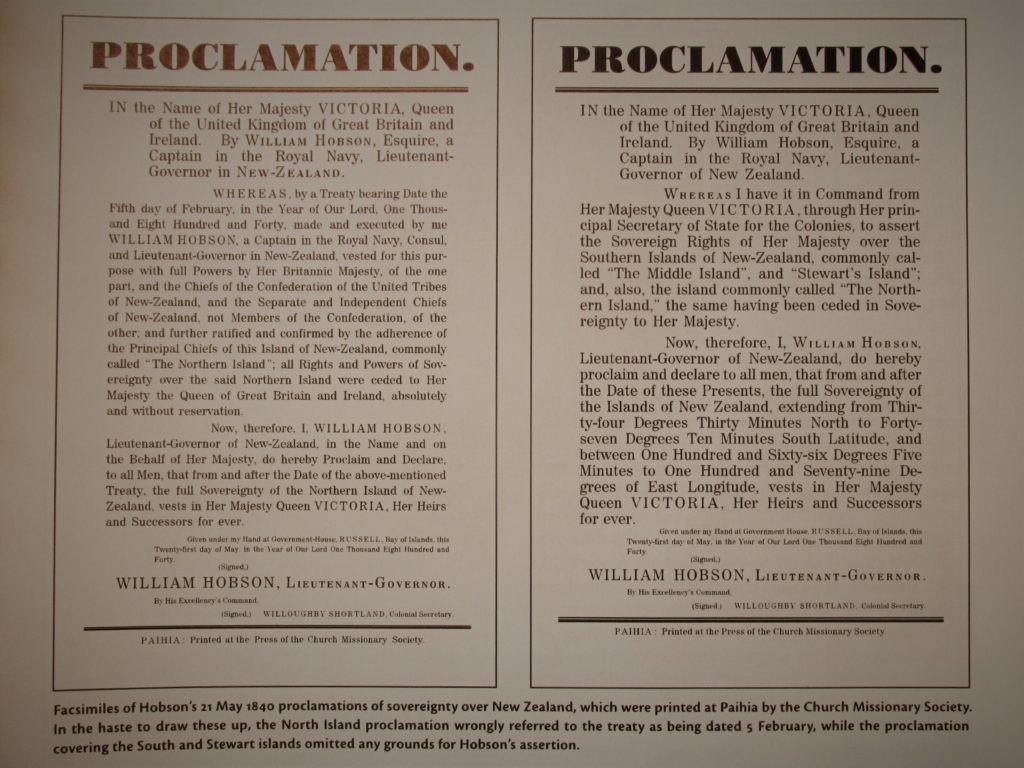
In the body of the Waitangi Tribunal’s October 2014 report on Ngāpuhi’s the 1835 Declaration of Independence and 1840 Waitangi Treaty stated that Captain Hobson justified his May 21st 1840 proclamation sovereignty over New Zealand, on the basis of cession by treaty over the North Island and “over the South Island on the basis of Cook’s discovery”. However, the report only displayed a copy of the the version that omitted the phrase “on the grounds of Discovery” while the accompanying caption stated that the grounds for Hobson’s assertion over the South and Stewart islands was omitted. Unfortunately, the Waitangi Tribunal omitted the version used by Moon and Biggs in their 2002 book, The Treaty and Its Times, but subsequently omitted by Moon in his 2010 book, New Zealand Birth Certificates.
Furthermore, the Waitangi Tribunal reported the phenomena of the Church Missionary Society at Paihia printing a proclamation that claimed sovereignty over the North Island as being dated incorrectly. However, the February 5th 1840 date is not simply a sign of haste, as the Waitangi Tribunal assumed. Because the Tribunal failed to model for a crime of power, they did not code the phenomena as circumstantial evidence of a Treaty Clique weaponized time to gain a new jurisdictional space for the British Empire before the French could win the territory.
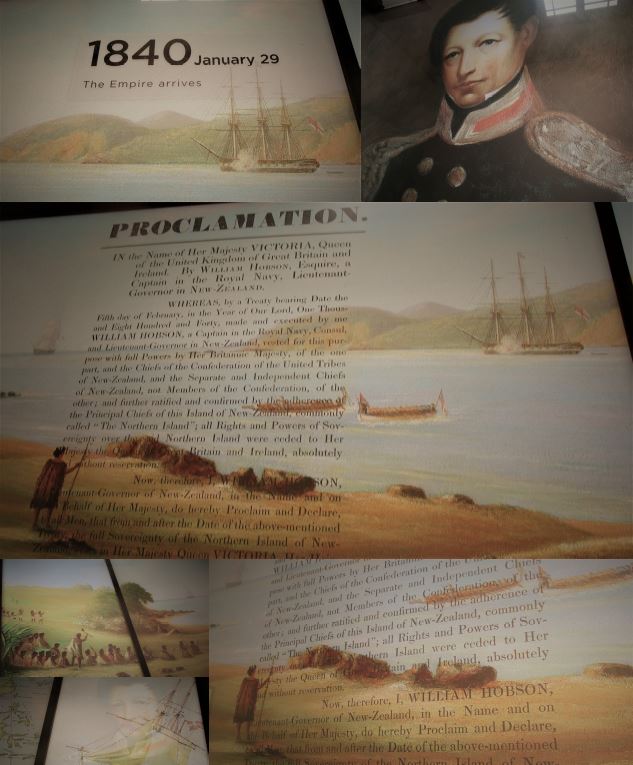
As a result of Hobson’s dispatch to London, dated May 25th 1840, sovereignty over New Zealand was gazetted by Proclamation in London on October 2nd 1840, which triggered Queen Victoria’s Letters Patent of Severance one month later. The British Monarch’s Royal Seal proves that signatures from half the country, and the interior territories were not considered necessary, because the Discovery Doctrine stipulated that ‘savage natives’ lacked full sovereign political rights. Moreover, the 1835 ‘Declaration of Independence’ was a British-led construction to game he tangata o whenua of New Zealand by creating the appearance of a sovereign nation capable of treaty making, to set up Māori for subsequent deconstruction of their sovereign powers and authority – by stealth.
In spite of the 1840 Waitangi Treaty’s pretensions in the preamble that Prince Charles’s great, great, great grandmother was anxious to protect the chiefs and the inhabitants of New Zealand from evil, the systematic parallel track screams loud and clear of an exquisitely evil imperial take-over stratagem. Indeed, Lord Normanby’s Instructions to Captain Hobson on 14 August 1839 to construct the extenuating circumstances justifying his Treaty-making mission were written save face for the British Parliament. As Foden pointed out, treaties between a European Power and an indigenous people could be make it through the courtroom hoop, if a judiciary could be convinced that the particular circumstances were justified. However, the Treaty spun on the innovative fulcrum of deceptive translation differences, an obvious unseemly haste and a parallel track of Colonial Law instruments. The pretense in the preamble would surely have been rather obvious to a bench of judges that an exquisite piece of theatre had been deployed with props of paper, pens and presents to persuade Māori to happily, generously and unreservedly gave away their sovereignty forever to a Germanic Queen who had come to England just three years prior, and whom they had never met, and while there was no time to consult, reflect or propose counter-solutions, with the involvement of Māori who lived in the interiors among the highly roastable moa.
Trick or Treats – The Enduring Cession Myth
Because – Māori were unwittingly lured into agreeing to be cast as ‘British Subjects’, and the signing Treaty Chiefs were tricked into giving up all their rights and powers of Sovereignty absolutely and without reservation to Her Majesty the Queen of England – His Royal Highness at Waitangi nearly 180 years later was, essentially, ‘humbly’ peddling the English language version of the 1840 Waitangi Treaty in which rangatira were deemed to have ceded all sovereign power and rights to Prince Charles’s great, great, great grandmother.
It is, therefore, a potent combination of symbols that manifested on Prince Charles’s Waitangi visit, since he and his wife – The Duchess of Cornwall – toured through the old Busby residence on the Waitangi Treaty Grounds.

For their part, Northland’s largest iwi, Ngāpuhi, has endorsed a Waitangi Disney Treatyland mythology through their failure to present ‘HRH’ – The Prince of Wales, with a copy of the Waitangi Tribunal’s scholarly 600-page October 2014 report, and their own commissioned, excellent field report, Ngāpuhi Speaks. Those two reports both found that the Ngāpuhi Treaty Chiefs believed they were conferring Queen Victoria the right to appoint a governor to rule over Pākekā, and did not wittingly sign away their sovereignty in 1840.
Once Ngāpuhi allowed the neo-feudal billionaire Prince to forgo bending to pick up the wero outside the Treaty House that was once the home of the land-swindling British Resident James Busby – Prince Charles was free to cement the ‘Myth of Cession’ by Treaty with his vocally symbolic speech.
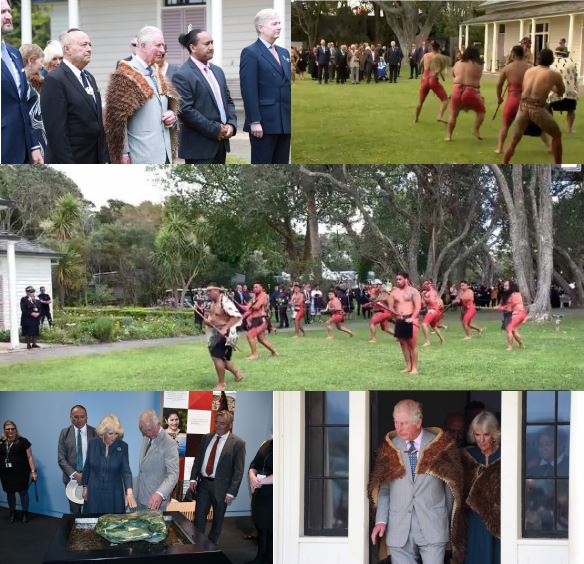
Indeed, The Duke and Duchess of Cornwall also performed the Touching the Pounamu Ritual. With this active symbol, the Heir Apparent to the British Throne, in effect, reaffirmed the secret constitutional mechanisms deployed in 1839 and 1840 to gain paper sovereignty over New Zealand. Since New Zealand was acquired as a British dependent colony on the basis of Settlement element of the Discovery Doctrine, and the sovereignty over Te Wai Pounamu, or the South Island, was gained by proclamation on the grounds of Discovery, the performance of this Touching the Pounamu Ritual is a particuarly potent active symbol of actual occupation and current possession. More so, because it was performed by the Heir Apparent who was not forced to very publicly acknowledge that the 1840 Waitangi Treaty was hawked to construct the appearance of voluntary cession by treaty.

The korowai presented by Prince Charles in private inside Te Whare Rūnanga to the descendants of siblings of Ngāpuhi chief Reihana Te Takauwau, was – in effect – a bond mechanism. The Prince of Wales posted himself as a hostage to draw Ngāpuhi iwi closer with this loaned Royal Present.
Therefore, when Prince Charles claimed a reaffirmation of his ‘humble’ commitment to the ‘bond’ between the Royal Family, Ngāpuhi and other Māori that this ‘convenant’ endures – the Heir Apparent was actually communicating in a codified, politely racist manner that the British Monarchy’s claim to the Realm of New Zealand as a Royal possession would collapse if the Myth of Cession by treaty was widely exposed as such.
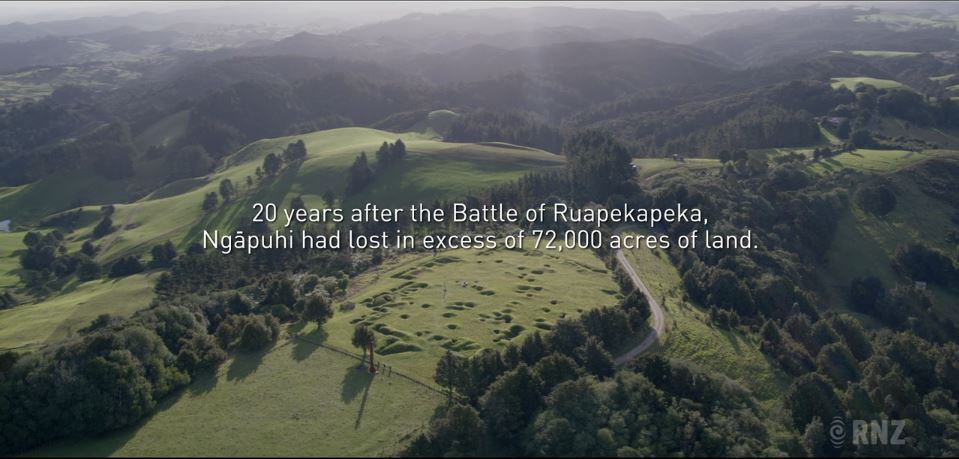
Just as galling, Prince Charles’s rhetoric extended to peddling hope when he deployed weaving metaphors to mention the ‘Tuia250 Encounters’, sentiment that a genuinely shared future can be forged, and as he feigned enthusiasm for NZ Wars history to be taught in schools. The Knight of the Order of the Garter also talked up the war museum under construction, which was a sly hat-tip to his own great, great uncle, King Edward VII, whose sinister role in plotting war against Germany is revealed in Hidden History: The Secret Origins of the First World War by Gerry Docherty and Jim Macgregor. As King, Edward VII played an instrumental role in enticing France and Russia into secret alliances with Britain in a long game against Continental Europe’s leading industrial powerhouse. As the sovereign head of the occult Order of the Garter, Edward VII drew the royalty of Spain, Portugal, Russia, Italy, Sweden, Persia and Japan closer by investing them as ‘stranger’ Garter Knights. In this way, King Edward VII used the Order of the Garter as a secret mechanism for hidden world domination objectives. As Grand Master of English Freemasonry, he was positioned at the centre of an epic gambit of a British ‘Secret Elite’ to construct a universal empire that involved laying siege to Germany which was in the midst of constructing the Berlin to Baghdad Railroad to transport oil.
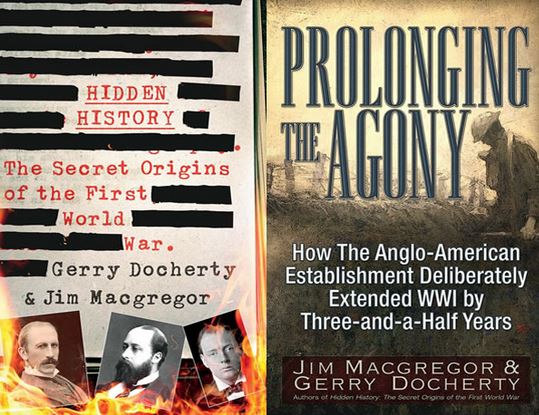
The English Order of the Garter, which is England’s most prestigious order, and features St George and the Dragon, was founded in 1348, by King Edward the Third. Queen Elizabeth II is Sovereign Head and Prince Charles is a Knight of The Most Noble Order of the Garter. When it is recalled that The Duke of Cornwall’s 212 square mile private estate, The Duchy of Cornwall, was founded in 1337 by King Edward III, the possession and occupation rituals of the Neo-Feudal billionaire Prince at Waitangi becomes more brazen. The English Order of the Garter features St George and the Dragon, and not surprisingly, given the Cult of St George, this legendary character is the patron of all knighthoods, according to Orders and Decorations, written by Václav Měřička.
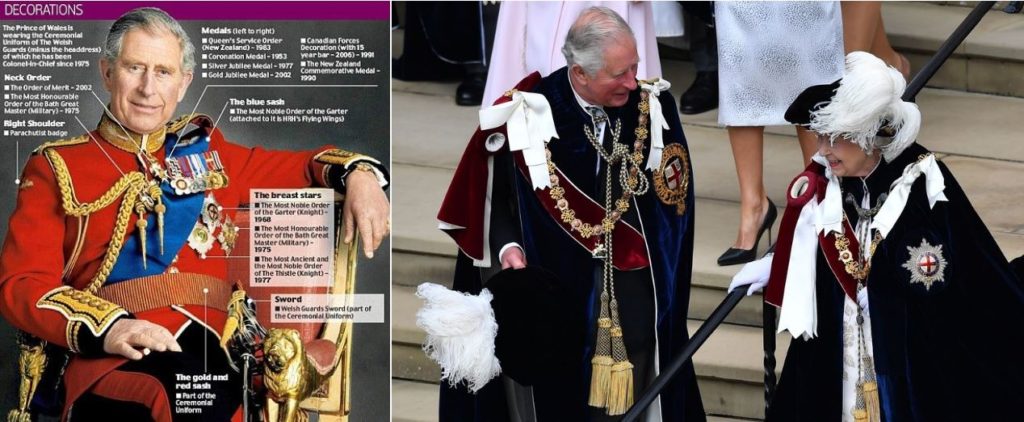
as historians Gerry Docherty and Jim Macgregor reveal in Hidden History: The Secret Origins of the First World War.
The potent symbolism of the Duke and Duchess of Cornwall at Waitangi is loaded. Especially, when it is remembered that Busby’s 1834 National Flag of Shipping actually flies on the flag-staff at Waitangi, and bears the Cross of St George.
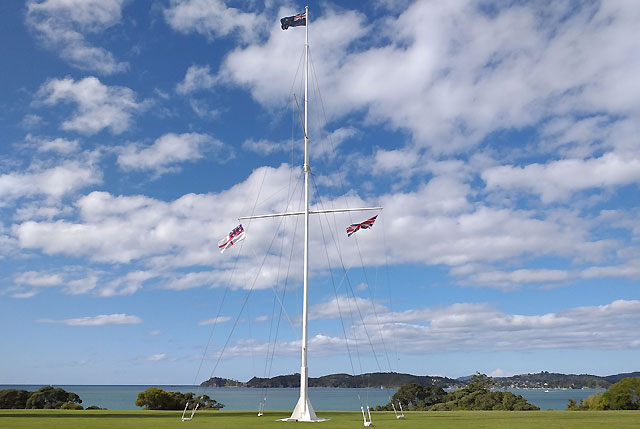
And when it is recalled that England’s flag features the Cross of St George, the long-game that New Zealand’s first British official, James Busby and his associate Reverend Henry Williams, were playing – becomes more apparent.
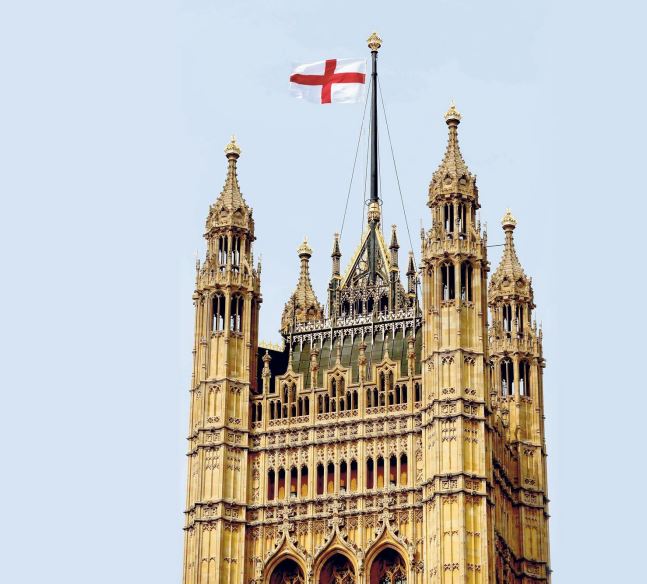
Conspicuously, The Duke and Duchess of Cornwall’s schedule was ‘unbooked’ for the day after they were at Waitangi.
Therefore, the timing of the korowai loan from Queen Elizabeth II on November 20th 2019 takes on an epic symbolic potency.
The high stakes in the land dispute at Ihumātao suggests the Heir Apparent to the British Throne was meeting with those that comprise the New Zealand Crown – given the detectable symbolism used to communicate in a codified way to the Pakeha-dominated Ruling Class whom are attuned to such encoded signals. Because, if matters were to snowball into a widespread shift in the political ground around the Crown, whereby a sustained groundswell supporting private land being vested to hapū and iwi with Māori sovereign title — then the Crown could quickly undergo a catastrophic collapse in its power.
It would, therefore, not be surprising to find out that such a possible, nebulous Crown meet-up included something like the ‘Twenty Ruling Families’.

To sum up, the Royal visit to New Zealand by the neo-feudal billionaire and Knight of the Order of the Garter, The Prince of Wales, and his wife, The Duchess of Cornwall, was a charm offensive, crisis intervention, and legal exercise to maintain the hereditary rights of the British Monarchy over the Realm of New Zealand.
It was as much about pulling the Waitangi host iwi, Ngāpuhi, into the Crown’s orbit to settle, cede, and submit — as it was about ensuring that land buy-backs for Māori don’t become an election issue. The control of both of these narratives is critical for the Neo-Feudal Crown, because their political kryptonite weakness is close exposure to the Myth of Cession by treaty.
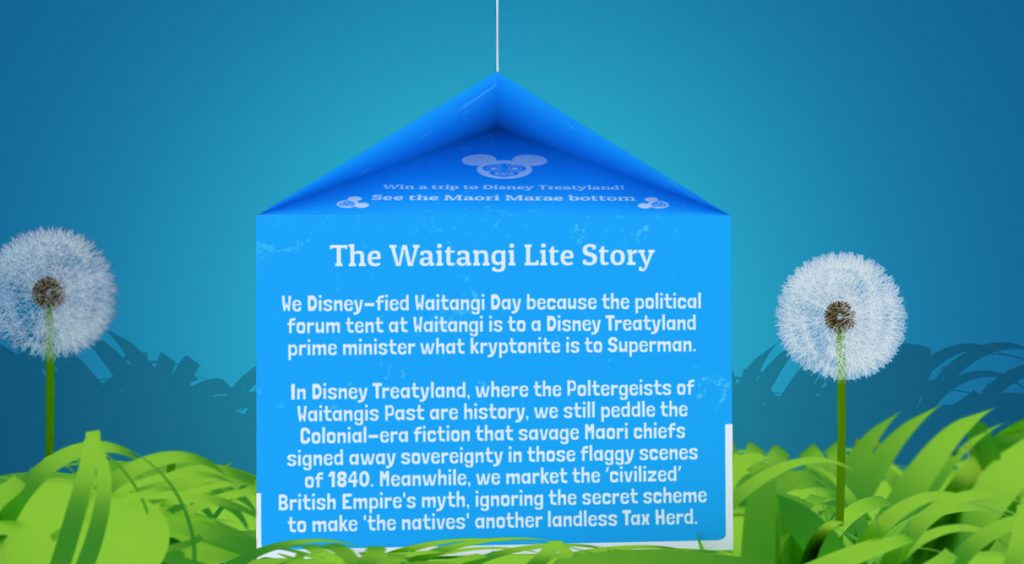
The Prince of Wales’s gifting of a new Queen’s Colours flag to the RNZAF at Whenuapai Airbase appears to have been a Sovereign Conquest ritual. These rituals were in keeping with the still active piece of international law dating back to 15th Century, known by its modern term, the Doctrine of Discovery. Because such flags are a symbol of sovereignty and communicate the armed forces are ‘Her’ armed forces, and that a new Queen’s Colour Flag was presented at a time when Prince Andrew-Jeffrey Epstein Scandal made world news following the BBC special interview with Prince Andrew on Sunday 17th November – the timing may have signified Prince Charles will become King soon. After-all, the BBC interview with Prince Andrew had been in the pipeline for six months. If Prince Charles were to become King soon, Queen Elizabeth II and Prince Phillip can step back, while King Charles takes the heat of official probes, and after a short reign, the next generation takes over and the Monarchy would remain intact.

Indeed, the neo-feudal Prince’s Royal Charm Offensive Spells at Whenuapai, Waitangi were propagandist.
At Waitangi, The Prince of Wales intended to lower expectations of Ngāpuhi by subtly regulating hope through constructing acceptance to complete the treaty settlements, win loyalty to Royalty – as British subjects – through emotional hijacking, and cultivate a conformist agenda where the Monarchy retains its ancestral sovereignty claim over New Zealand. As anyone who has watched the President Snow ‘Hope’ scene in The Hunger Games will know, hope is the only idea capable of overwhelming the emotion of fear, and it therefore needs to be regulated because too much hope can snowball, leading to the élites losing control of their hierarchical systems. Prince Charles’s Royal Charm Offensive Spells were, in effect, Hope Porn Rituals. The Treaty settlements corporatize de-tribalized iwi, whom remain mostly landless even after receiving settlements, and therefore create a corporate Māori élite whom are lured away from dismantling and replacing the systems of the Neo-Feudal Realm that sustain the super-rich Pākehā Neo-Feudal Oligarchy, whom can only continue to exist if their claims to wealth remain encastled.
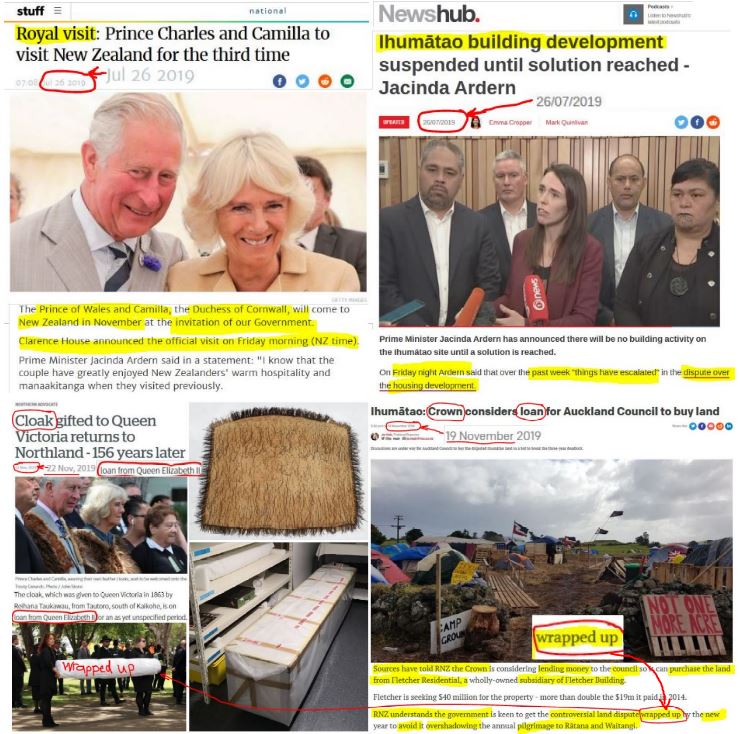
The presentation of the 2.6m-long korowai in a wrapped-up state to the descendants of Ngāpuhi chief Reihana Takauwau’s siblings inside Te Whare Rūnanga, appeared to signal the Monarchy was endorsing the loan of Tax-Herd monies to fund a buyback of lands at Ihumātao. The phenomenon of the news breaking story that the Crown was considering a loan to Auckland Council to buy-back land at Ihumātao confiscated in Juy 1863, the day before Prince Charles ceremonially presented the wrapped-up korowai gifted to Queen Victoria on July 15th 1863 for loan to Te Kōngahu Museum of Waitangi – is consistent with game theory. Given that on the morning of July 26th 2019, the London Residency of the Duke and Duchess of Cornwall, Clarence House, announced that the Royal Family couple had accepted the NZ Government’s invitation to visit New Zealand in November, and that later the same day, in the evening, NZ PM Jacinda Ardern announced a halt to the planned residential construction on the disputed land at Ihumātao – this double ‘coincidence’ is uncanny. It appears that the New Zealand Government was advancing the Neo-Feudal Crown Monopoly Game to control the Ihumātao crisis narrative arc, by controlling the crisis rituals in order to fix the preferred crisis solutions that it hopes will maintain the Sole Sovereign Status of the Royal Monarchy.
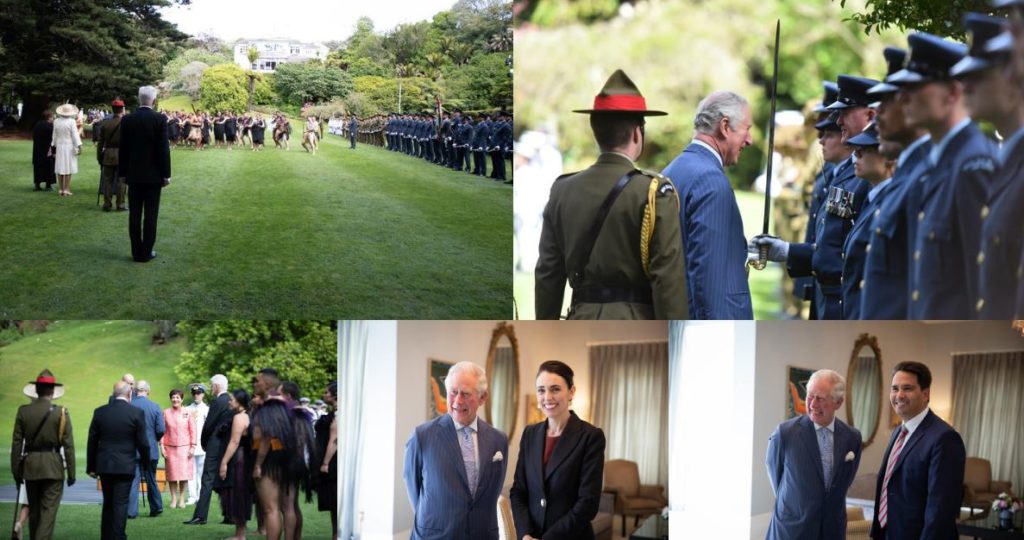
Moreover, the ‘coincidence’ of the Prince meeting with Jacinda Ardern and the leader of the National Party, Simon Bridges, as well as the Governor-General at Government House in Auckland, on the same day as RNZ broadcast the leak about the government evidently being “keen to get the controversial land dispute wrapped up by the new year to avoid it overshadowing the annual pilgrimage to Rātana and Waitangi,” suggests that private talks were held about the importance of stablizing the situation to maintain the Pākehā-dominated Ruling Class’s to keep contol of the Neo-Feudal Realm.
Therefore, the ‘coincidence’ of a korowai that was gifted by a Ngāpuhi chief to Queen Victoria on July 15 1863, and now being loaned to the Waitangi Museum while the Crown considers a loan for a buyback of land at Ihumātao is completely consistent with game theory.
Ironically, Queen Victoria was given this korowai by a Ngāpuhi chief who evidently spoke about land-loss and the Treaty breaches. While concurrently, the Governor of the New Zealand Colony and Commander-in-Chief, who was also a Knight Commander in the Companion Order of the Bath – Freemason Governor Bro. George Grey, was overseeing the start of the Waikato War. Governor Bro. George Grey had just evicted ‘the Natives’ of Ihumātao by Proclamation dated July 9th 1863.
The elite-elite communications to stabilize the situation are detectable. It appears the Crown has sought to control the crisis rituals to avoid on discussion about how exactly and why exactly private land buybacks became a scared cow issue.
It turns out, land buybacks for Māori were short-circuited by a malicious act of arson on July 4th 1992, that was self-inflicted by a farmer Alan Titford. Because Titford blamed Northland iwi, Te Roroa – whom sought the return of urupa, burial caves and other wāhi tapu sites on farmed lands at the Maunganui Bluff, Aranga, north-west of Dargaville – and because National MP Ross Meurant rang The New Zealand Herald, New Zealand’s cultural-wide racism held sway to green-light more institutionally racist, structural stonewalling – as The Snoopman showed in “Fraught Precedents for Land Buy-Backs”.

The racist furore stirred up by Titford and his farming supporters resulted in the Bolger-National Government barring the Waitangi Tribunal from recommending such sacrilegious property transfers and thereby making discourse about private-land buy-backs a heretical act in the racist Realm of New Zealand.
Therefore, the timing of the korowai loan from Queen Elizabeth II on November 20th 2019 takes on an epic symbolic potency.
This stealthy move by the British Monarch encapsulates all four groups of the Neo-Feudal symbol system – active, verbal, concrete and graphic symbols. Moreover, when these symbols were combined with the ceremonial welcome of Māori culture, and the wero, symbolism becomes even more potent. Especially, since a dart was laid on the ground for Prince Charles to pick up. Particulaly as the Admiral of the fleet of the Royal New Zealand Navy, a Field Marshal for the army and Marshal of the Royal New Zealand Air Force, with the Queen’s approval ahead of his 2015 Royal Visit – had a feather handed to him at Waitangi during the wero challenge.

The Prince’s Discovery Doctrine rituals at Waitangi also signalled the need to maintain the ‘Myth of Treaty Cession’ to avert a catastrophic collapse of the Fourth British Empire.
The 2012 report Ngāpuhi Speaks commissioned by Kuia and Kaumātua of Ngāpuhi, and the 2014 report produced the Ministry of Justices’s Waitangi Tribunal – both missed the real significance of the parallel legal moves that included proclamations, new commissions, swearing-in officials, letters patent, legislation, gazetted notices and a royal charter that ‘legalized’ the British Crown’s annexation of New Zealand as a colony of Her Majesty’s Empire.

Therefore, when Prince Charles paid homage to Captain William Hobson at the stone memorial on the Waitangi Treaty Grounds, he was essentially paying respect to Captain Hobson for pulling off an epic swindle to gain a huge treasure the size of the Kingdom of Great Britain at so little cost. Simultaneously, the Prince may have also been acknowledging that New Zealand joined the Third British Empire (1815-1945) when his own great, great, great grandmother signed the Letters Patent of Boundary Extension that expanded the territory of New South Wales to include New Zealand on 15 June 1839.
The hosting of official visitors, including the Royals, is problematic for Ngāpuhi, the hapū groups that comprise the iwi, as well as other hapū and iwi of Northland and the rest of New Zealand because the Treaty Grounds’ jurisdiction is unlike most others. The Treaty Grounds are governed by the Waitangi National Trust Board, which is controlled by its enabling Waitangi National Trust Board Act of 1932 and its associated Amendment Act of 2015.
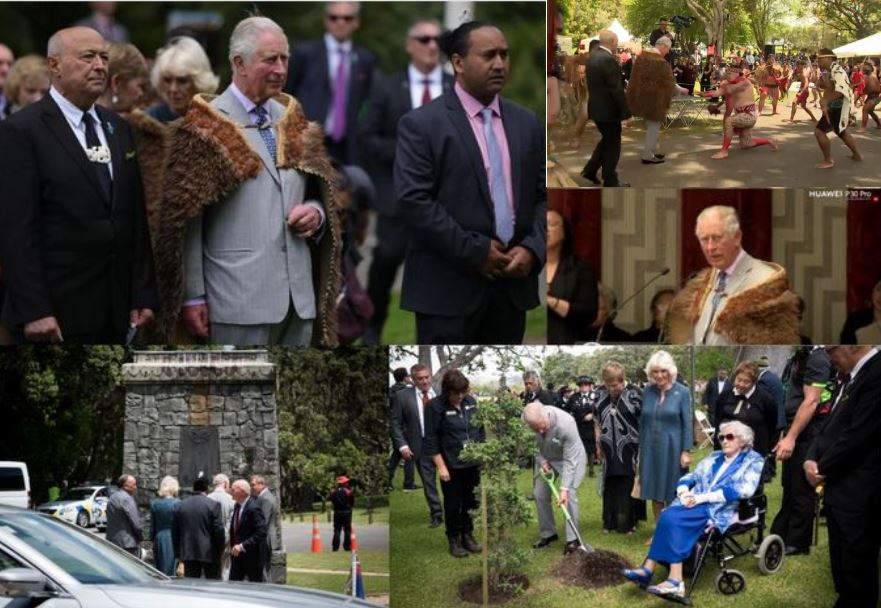
The Board’s governing legislation stipulates the appointments of: a member of the family of Hone Heke, a family member of Maihi Kawiti, a family member of Tamati Waka Nene, and a family member of Pomare; a family member of the Henare clan, a family member of the late Archdeacon Henry Williams; representative of the family of the late Edward Gibbon Wakefield; a person who in the opinion of the Board is a person prominent in the life of the country as a statesman or historian; the Governor-General as an honorary patron of the trust; a Crown representatives group — the Prime Minister; and the Minister for Arts, Culture and Heritage; and the Minister for Māori Development; and a Nominated Members group comprising two people, with one member appointed by the Prime Minister to represent the Government and one member appointed by the Leader of the Opposition. In other words, the composition of the board binds particular Māori and Pākehā families with the Crown. The Waitangi National Trust Board works to project an image to the country that the Crown’s relations with Māori are better than they really are, and that provides a conformist non-ancestral marae space for Royal visitors to pass the political-cultural hygiene test.
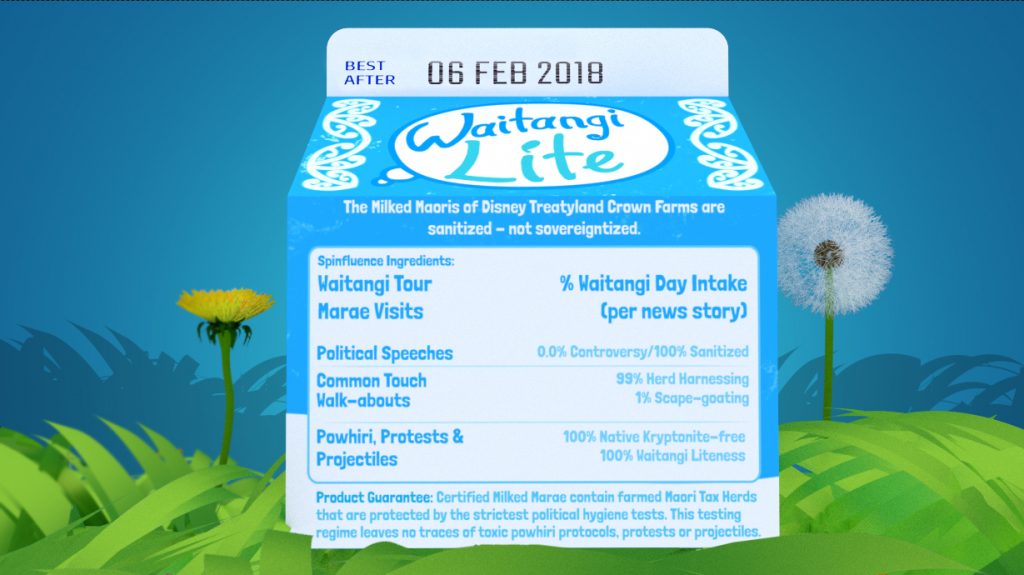
Therefore, the Waitangi Treaty Grounds marae – which is located on land purchased by Freemason Lord Bro. Charles Baron Bledisloe of Lydney in the County of Gloucester in England and endowed to the Waitangi National Trust Board at a time when he was Governor of the Dominion and Grandmaster of New Zealand Freemasonry – has more in common with a political theatre than an ancestral wharenui.
Therefore, Prince Charles’s tree planting ritual on the Waitangi Treaty Grounds, and gifting by a loan of the korowai as a present for display at the Waitangi Museum, and his ‘paying respects’ at the stone memorial of the ‘Waitangi Treaty Theatre Company’ director, Captain Hobson – look like they were rituals of actual occupation and current possession.
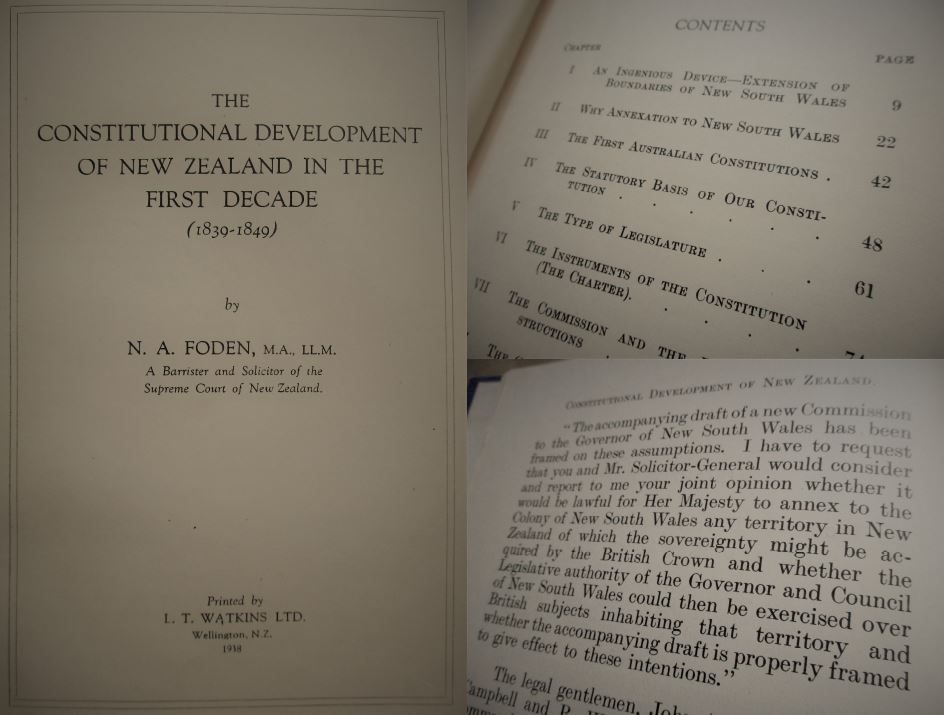
The New Zealand Crown has recklessly contrived its own ignorance by pretending it does not know about the British Crown-scripted Myth of Cession, the Discovery Doctrine and the power crimes inherent to the British Masonic takeover of New Zealand. By such contrived pretenses, those screening actions author subsequent unwitting misdeeds, such as another iwi and hapū being coerced to acknowledge the sole sovereign status of the Crown, in exchange for withheld development monies and token parcels of land dressed up as compensation for Treaty breaches – without the bulk of the brainwashed New Zealand people realizing the Neo-Feudal Crown’s game to remain the sole sovereign of this Neo-Feudal Realm.
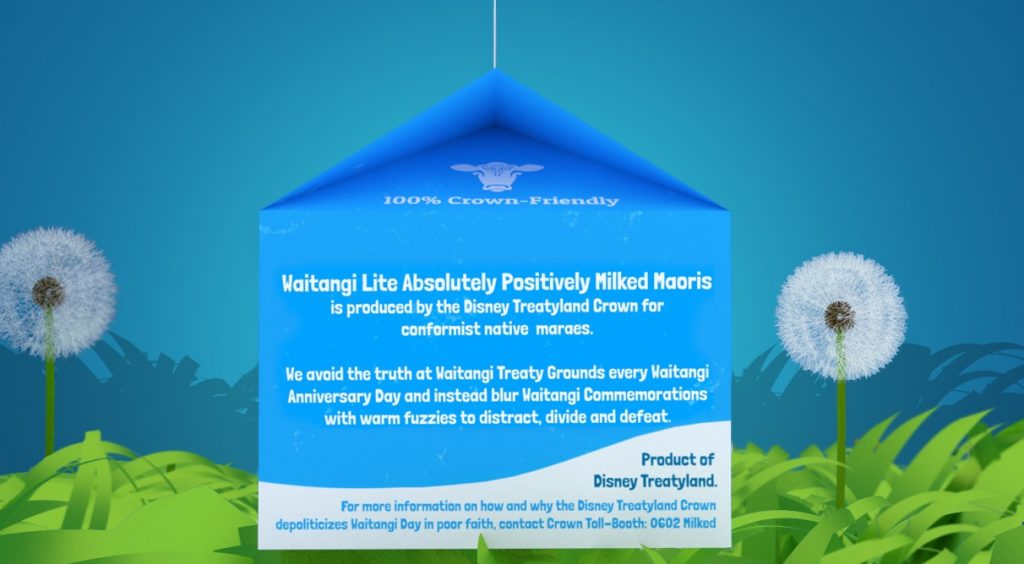
The only genuine, legally valid way for the top Pākehā and Māori Ministers of the New Zealand Crown is to admit – unreservedly – that Māori did not cede sovereignty in 1840 – at Waitangi. And explain the how, the who and the why of the two-track strategem to swindle paper sovereignty and structurally entrap Māori in a vicious wedge of war plot to gain substantive sovereignty over the soil. That may require a sustained occupation of the Waitangi Treaty Grounds of the kind that Pania Newton & Friends of the Save Our Unique Landscapes (SOUL) mounted in their Protect Ihumātao Campaign. It may also require Māori and Pākehā whom have public profiles strategizing, organizing and mobilizing a mutiny within New Zealand’s institutions that seeks to forge a rebalance of power, a dismantling and replacement of the international banker-controlled debt-enslavement monetary system, and the forging of self-determining communities on lands with Māori sovereign title.
The Royal Charm Offensive Spells need to broken because a society cannot make sound decisions when it is subjected to subtle emotional hijacking, stealthy exclusionary blackballing stratagems and proceedings that occur in the absence of full disclosure.
========
Editor’s Note: Please contact our intern, Steve Edwards, know if we have made any errors of fact, or if you have more information. e: steveedwards555@gmail.com
Crown Contrived Ignorance: The NZ Govt’s Reckless Refusal to Admit 1840 Treaty Trick while Gaming Ngāpuhi to Settle & Cede

See: Landlord Possession Rituals of Prince Charles: Part I
https://snoopman.net.nz/…/landlord-possession-rituals-of-p…/
The Masonic New Zealand Wars: Freemasonry as a Secret Mechanism of Imperial Conquest During the ‘Native Troubles’
https://snoopman.net.nz/…/…/25/the-masonic-new-zealand-wars/
Harnessing the Herd to Hide a Historical Heist: How and why the Crown’s marketing of the myth that Māori signed away sovereignty in 1840 breaches the Crimes Act of 1961
https://snoopman.net.nz/…/harnessing-the-herd-to-hide-a-hi…/

